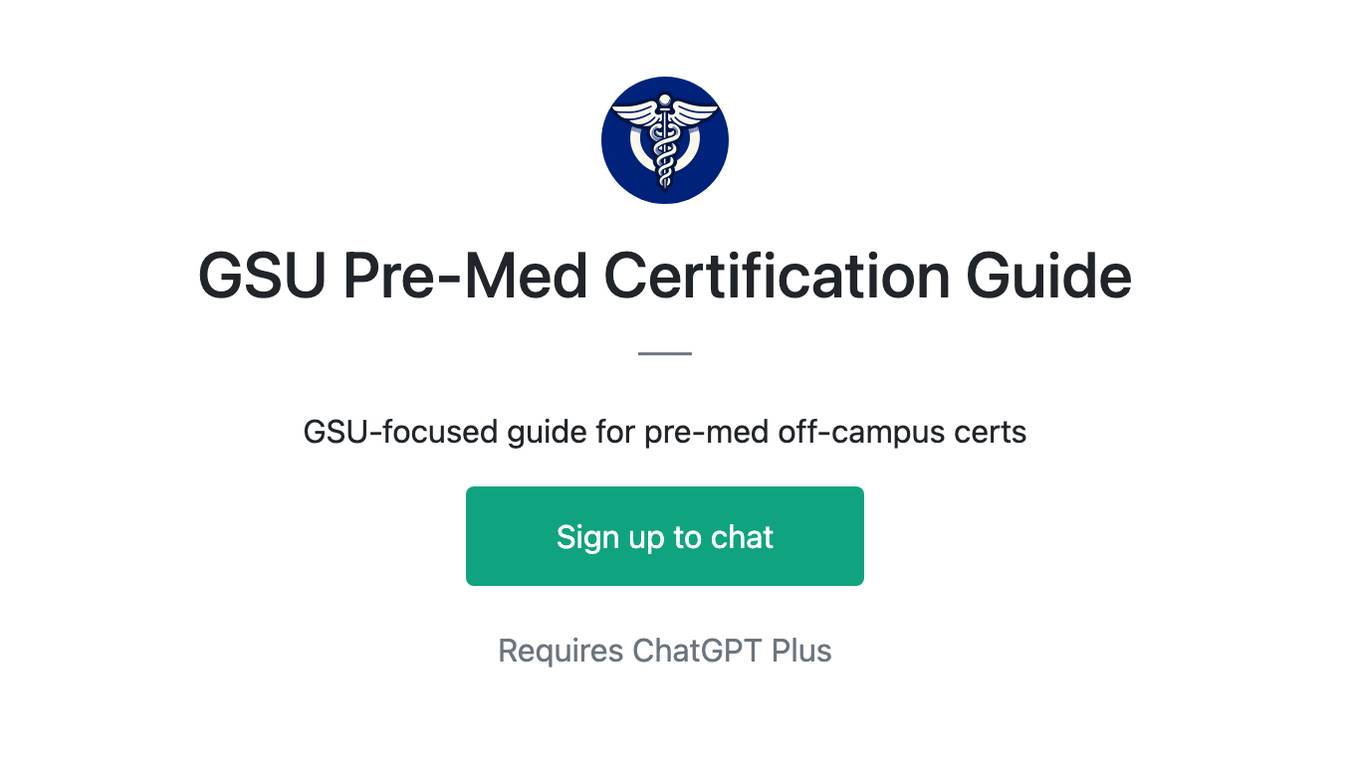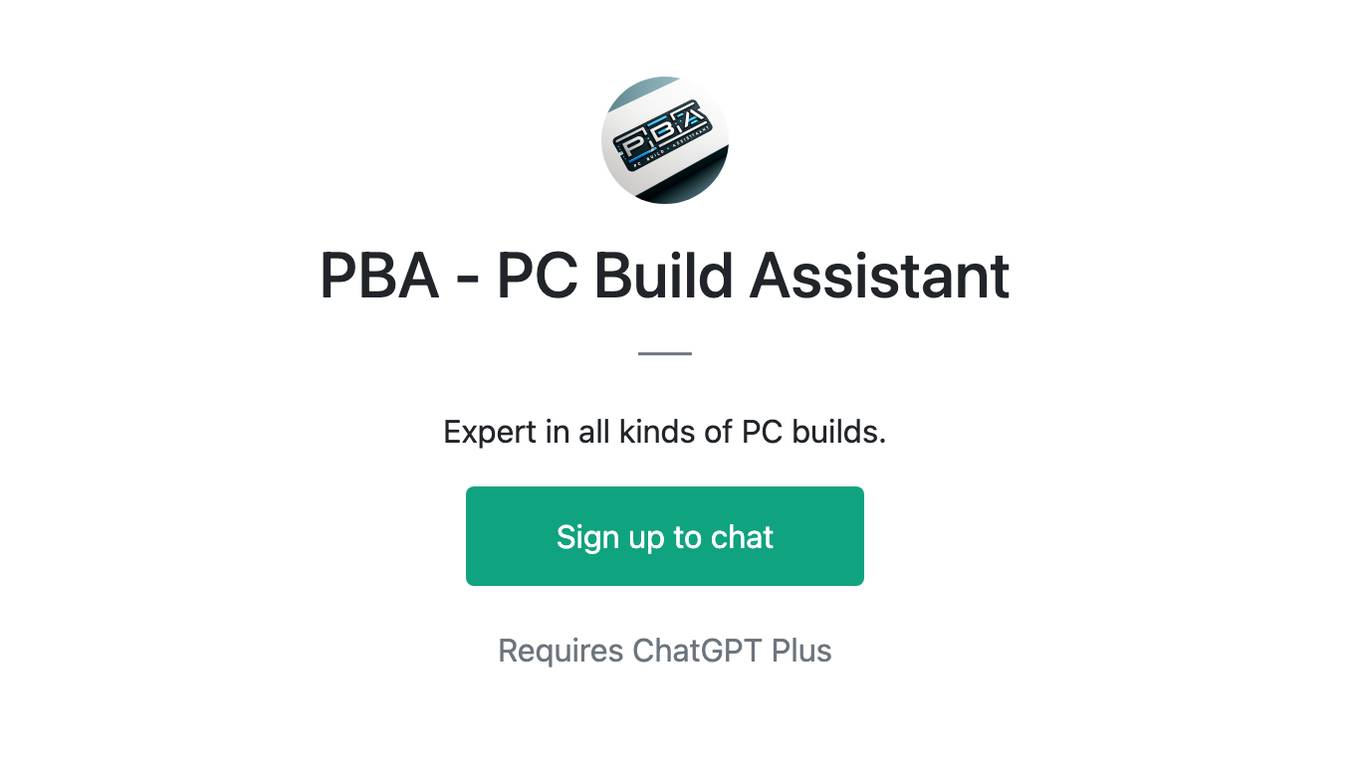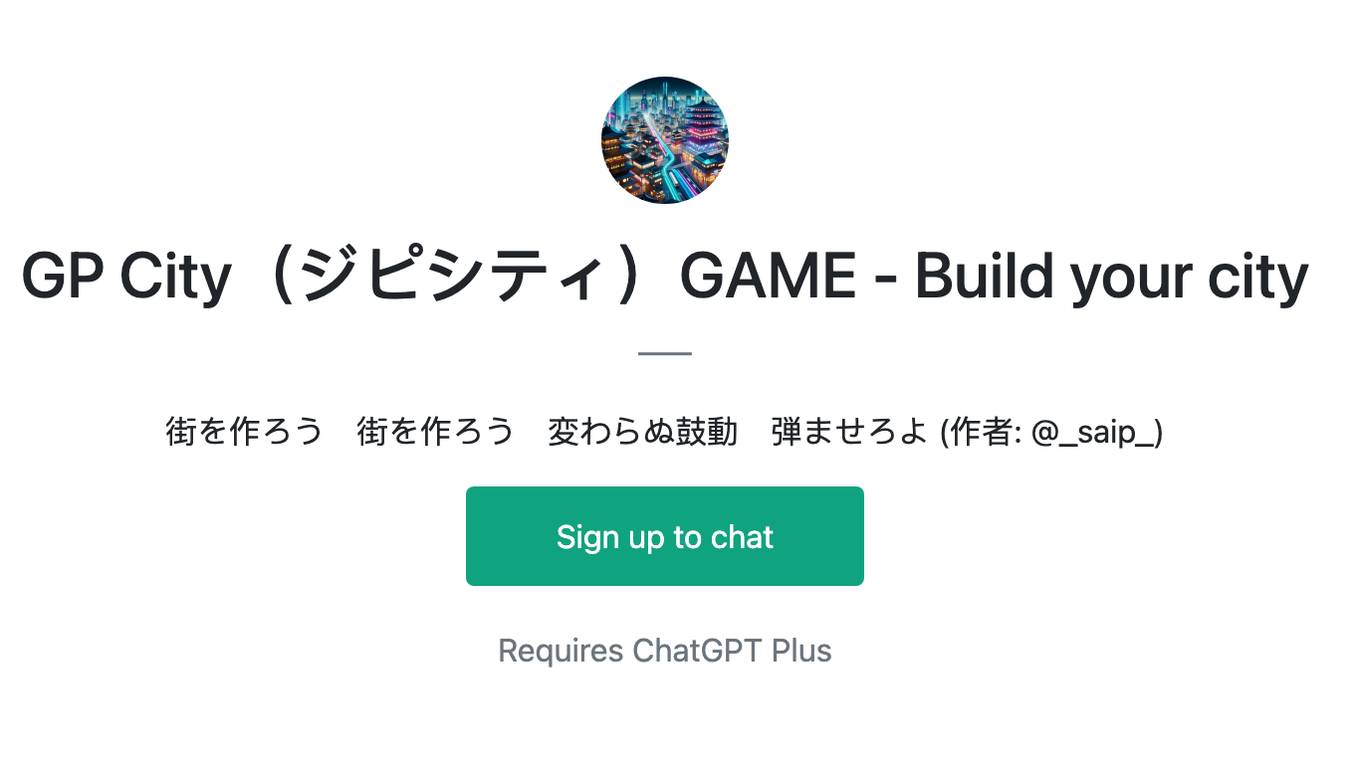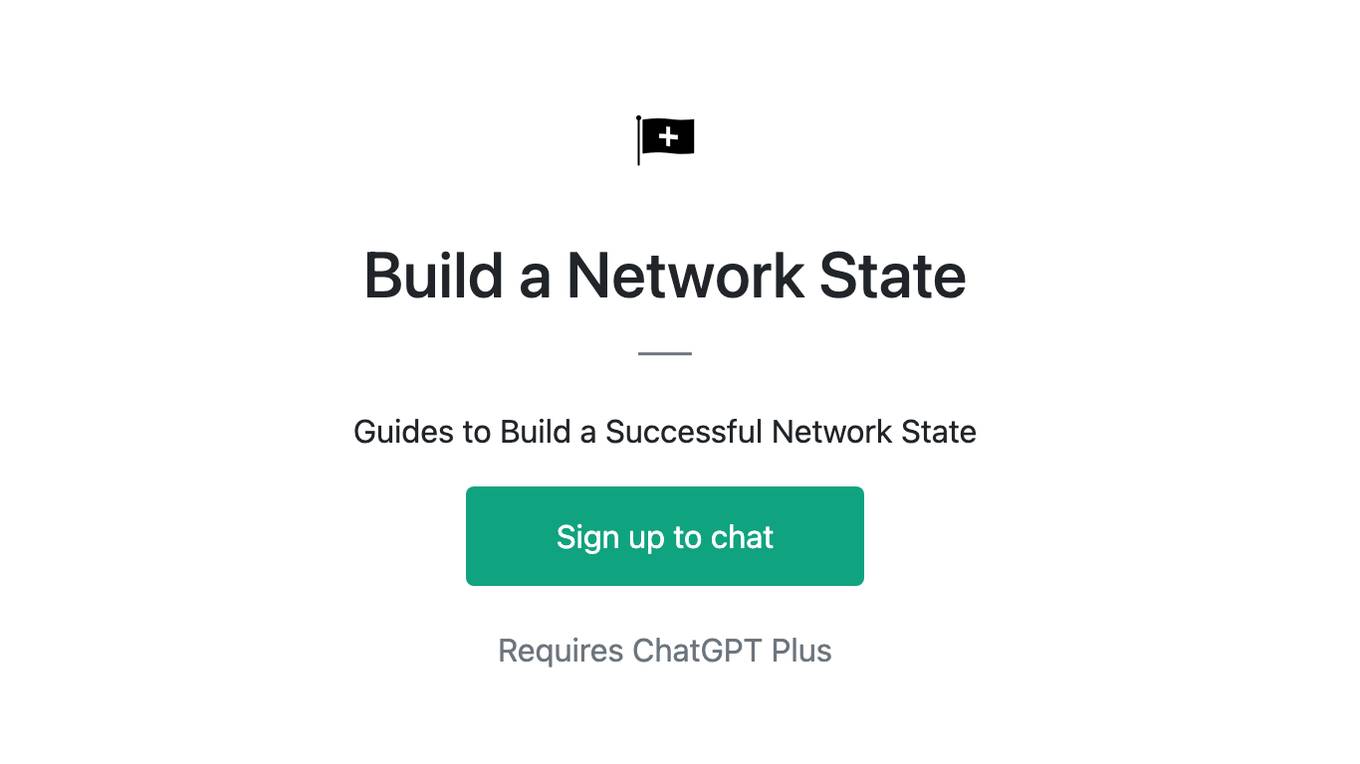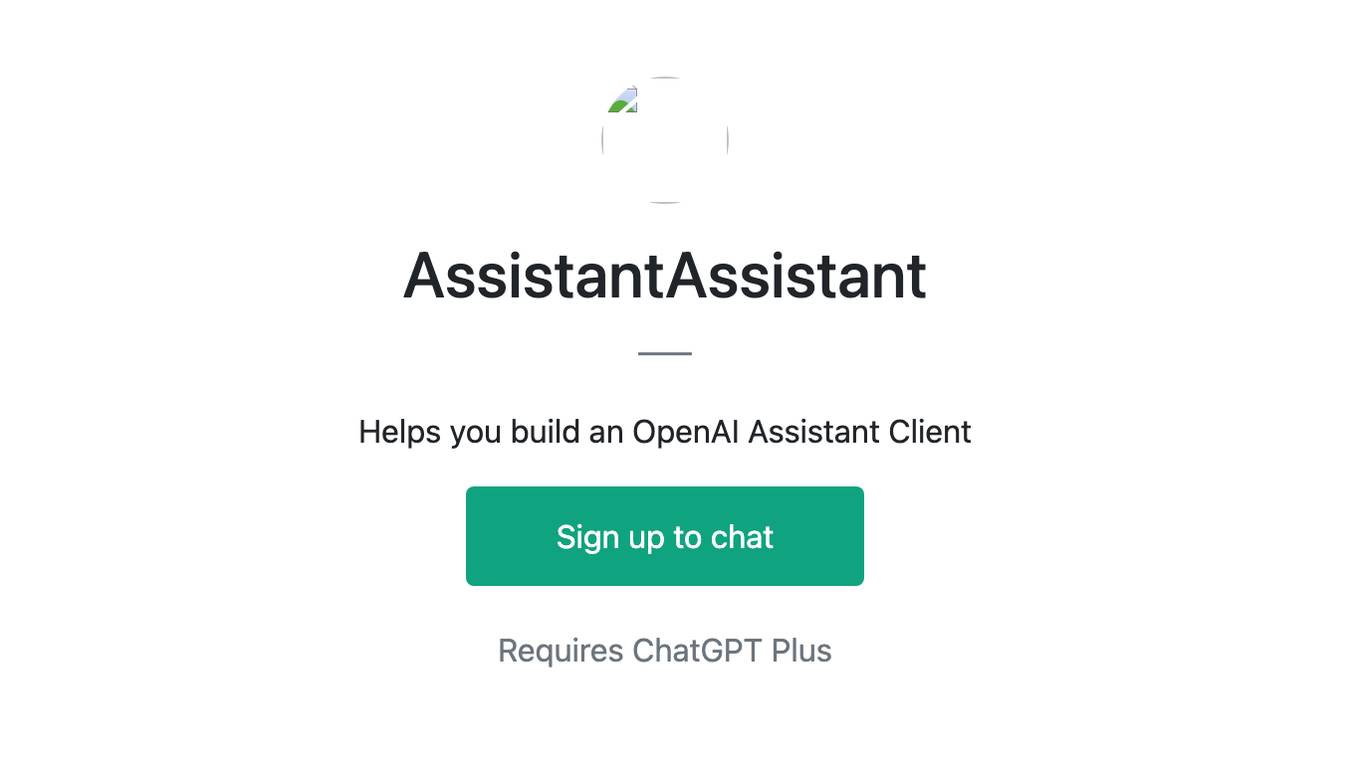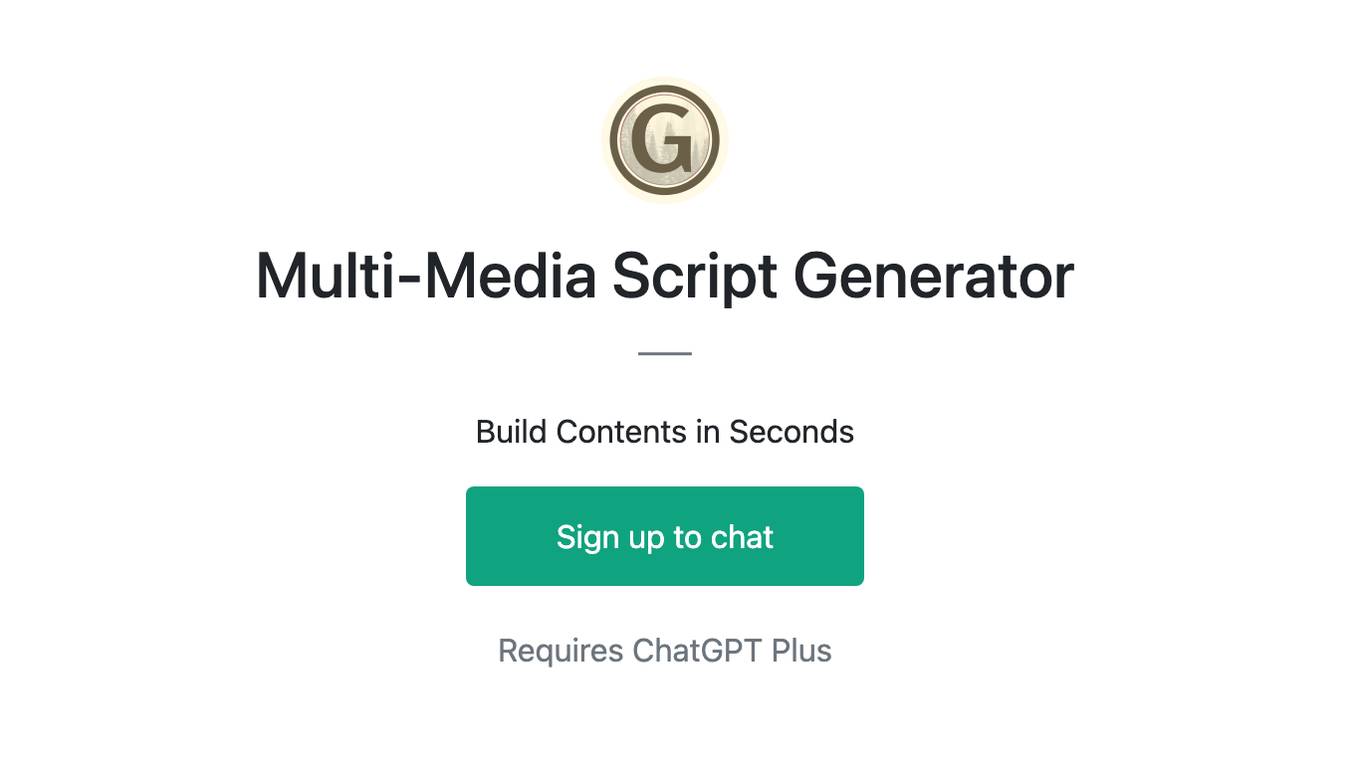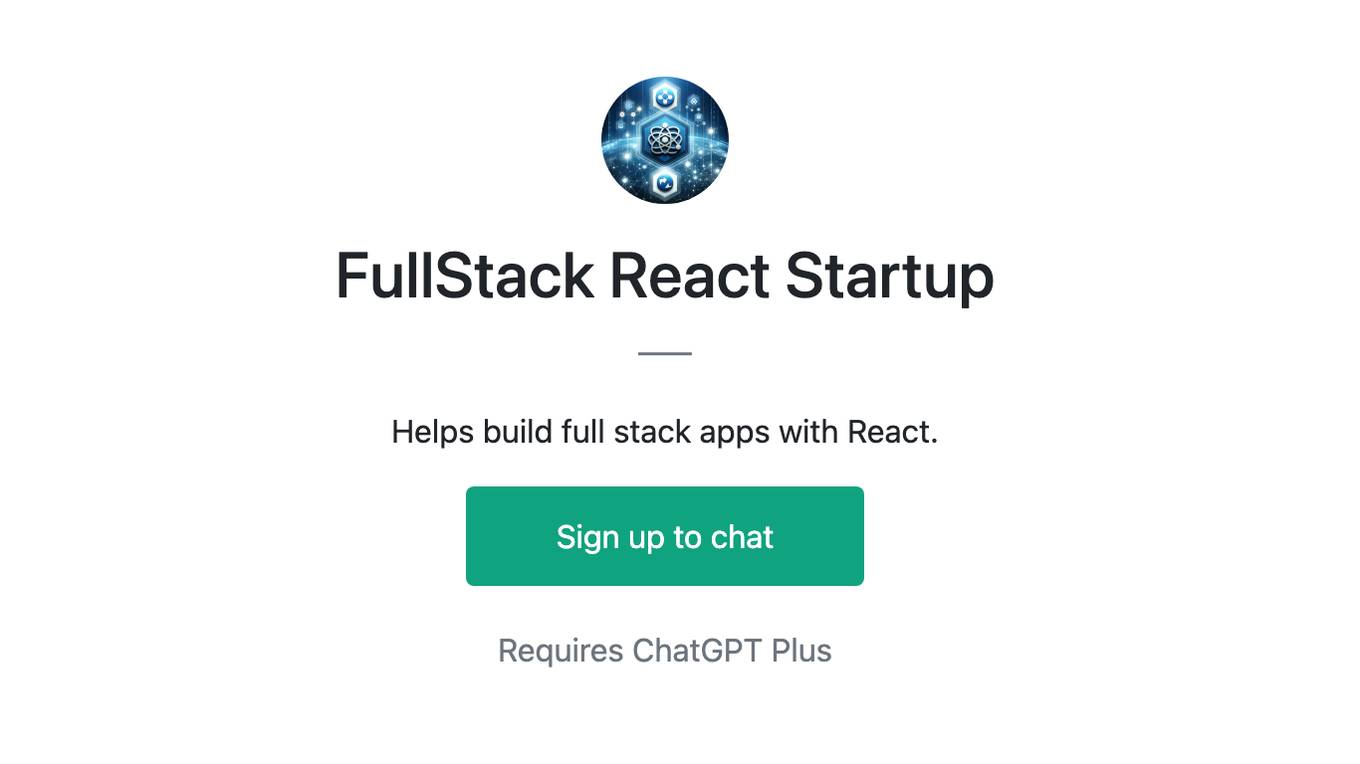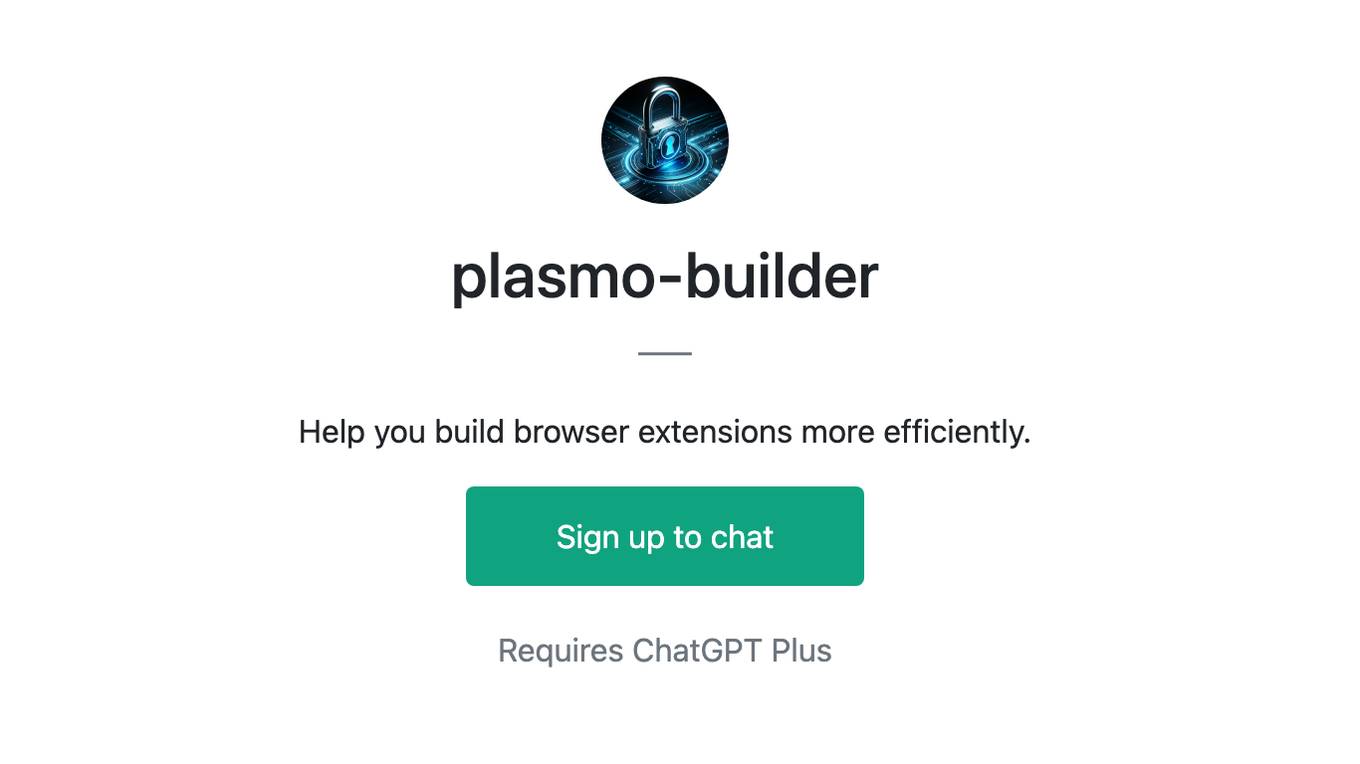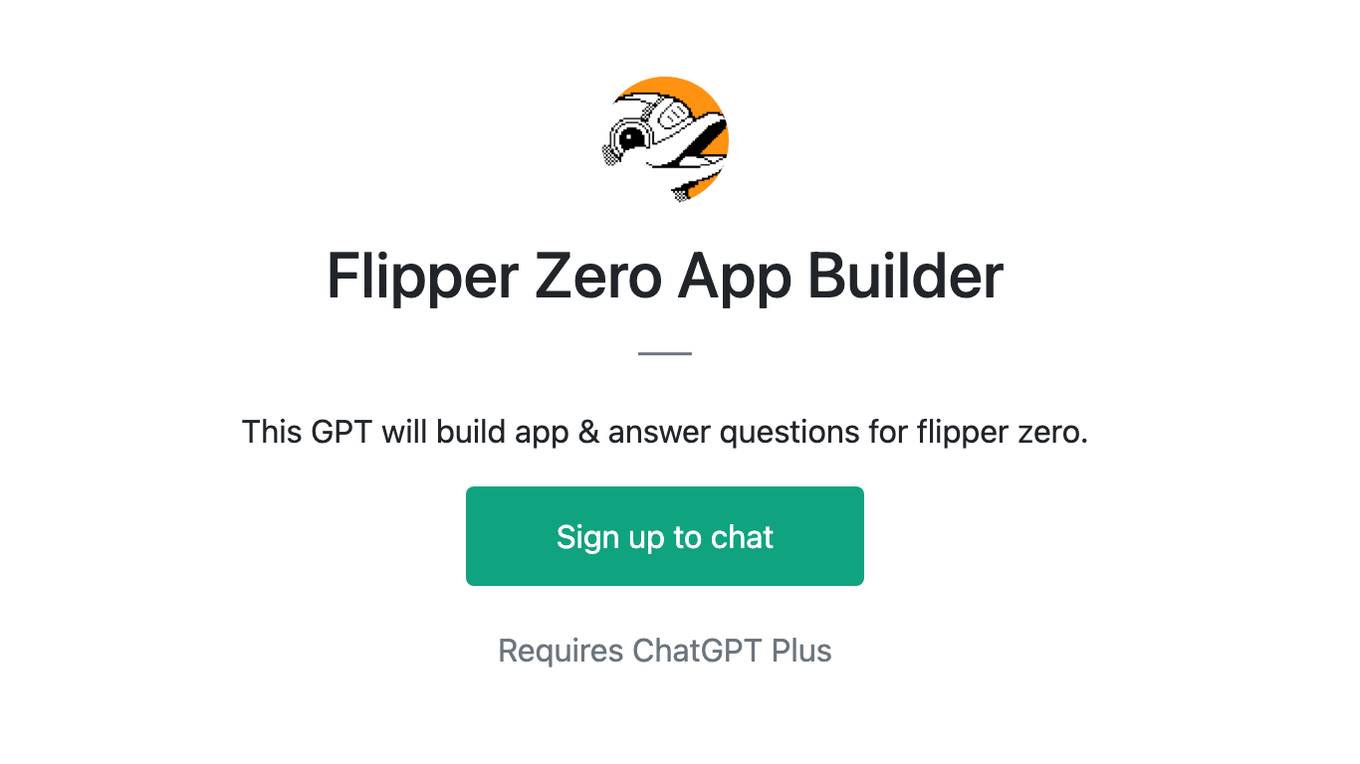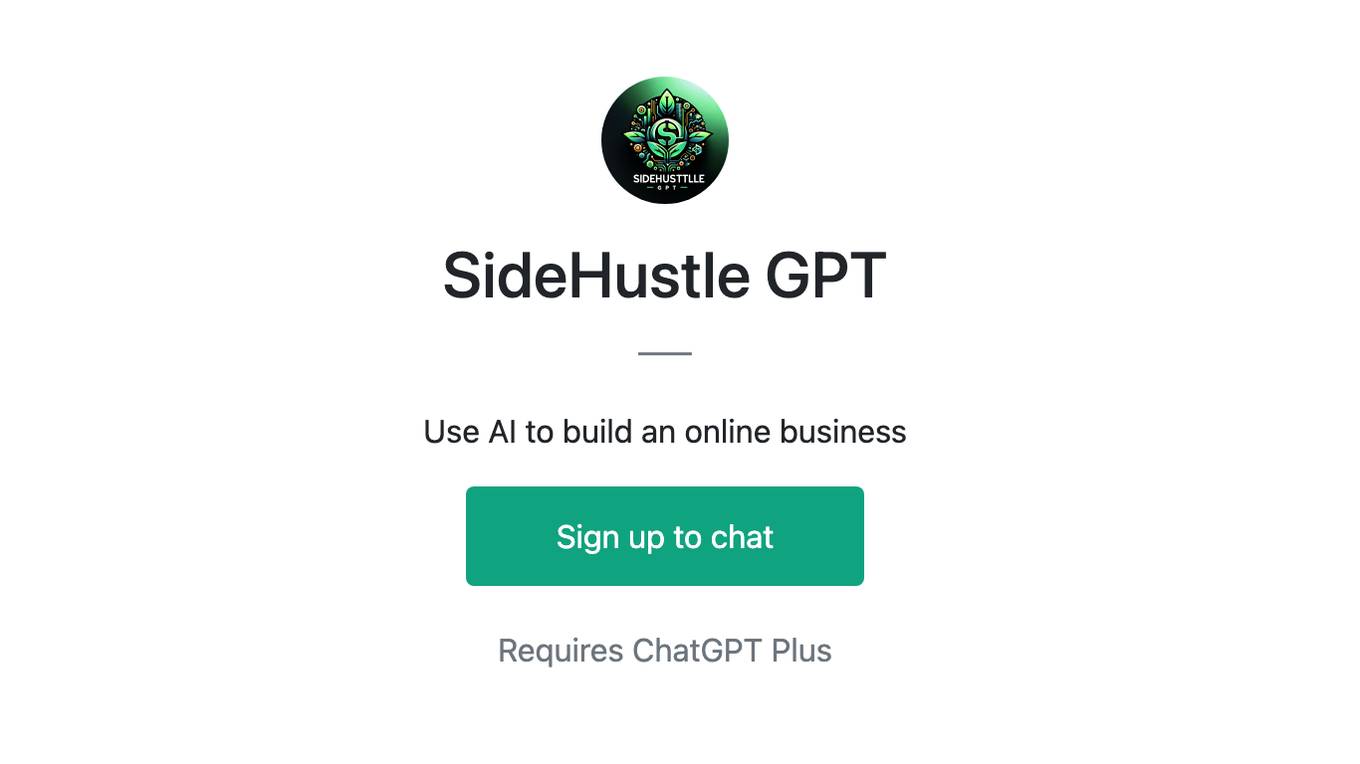Best AI tools for< Build Off Base >
20 - AI tool Sites
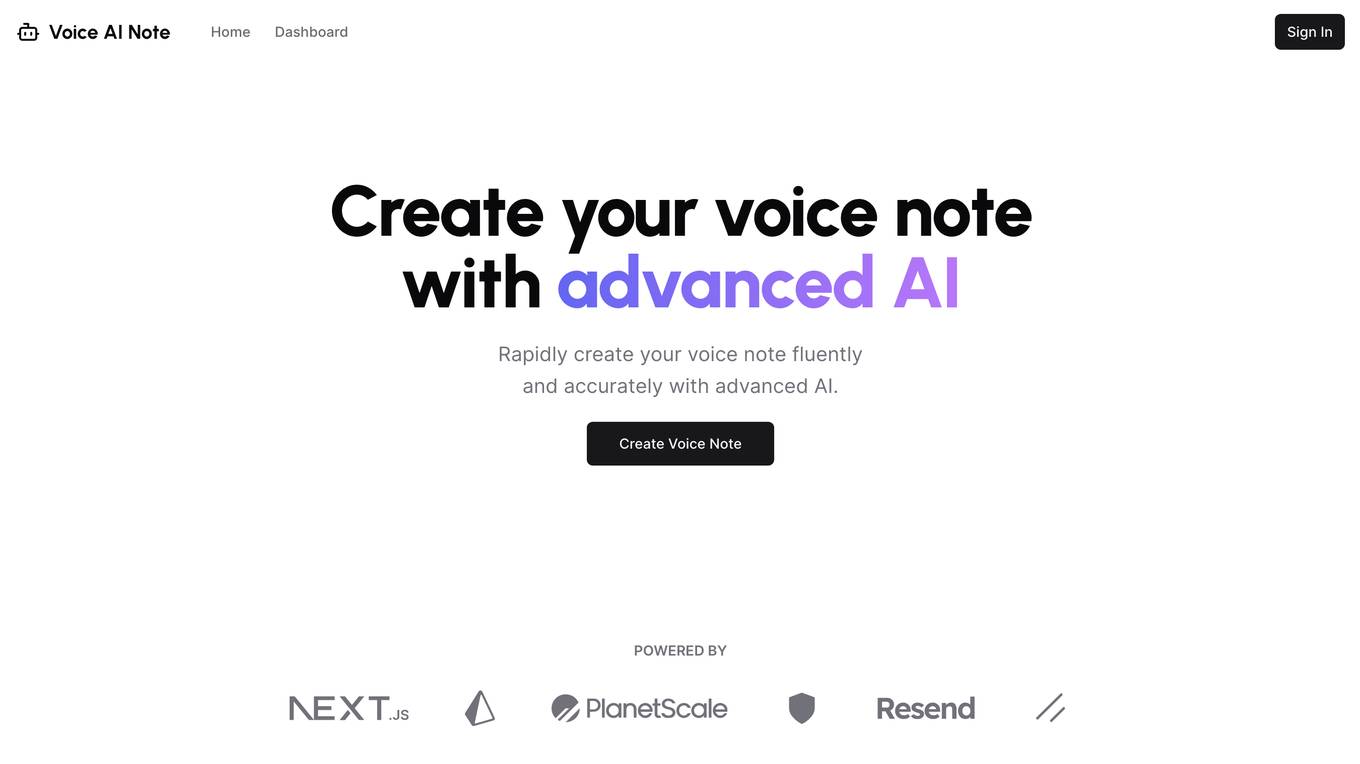
Voice AI Note
Voice AI Note is a web-based application that allows users to quickly and easily create voice notes using advanced AI. With Voice AI Note, you can create voice notes that are fluent, accurate, and sound natural. The application is easy to use and requires no prior experience with AI or voice recording. Simply enter the text you want to convert to speech, and Voice AI Note will do the rest.

Luma AI
Luma AI is an AI-powered platform that specializes in video generation using advanced models like Ray2 and Dream Machine. The platform offers director-grade control over style, character, and setting, allowing users to reshape videos with ease. Luma AI aims to build multimodal general intelligence that can generate, understand, and operate in the physical world, paving the way for creative, immersive, and interactive systems beyond traditional text-based approaches. The platform caters to creatives in various industries, offering powerful tools for worldbuilding, storytelling, and creative expression.
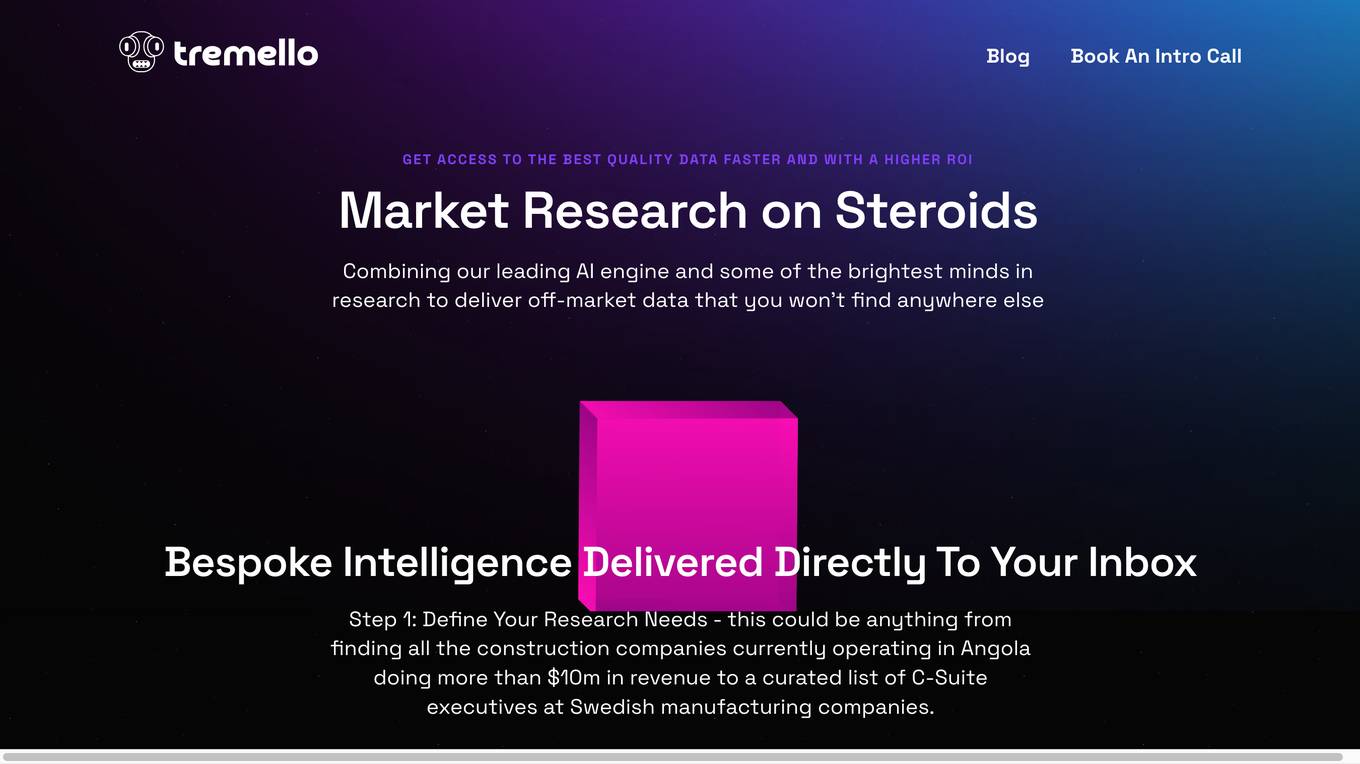
Tremello
Tremello is a market research platform that uses AI to deliver off-market data. It combines a leading AI engine with human experts to provide bespoke intelligence delivered directly to the user's inbox. Tremello's AI analyzes relationships, identifies patterns, and considers the broader context, delivering meaningful and actionable insights on top of a base human layer. It leverages a diverse range of data sources, including public and private databases, industry reports, social media archives, company websites, and government filings, ensuring a complete and comprehensive picture of the research subject.
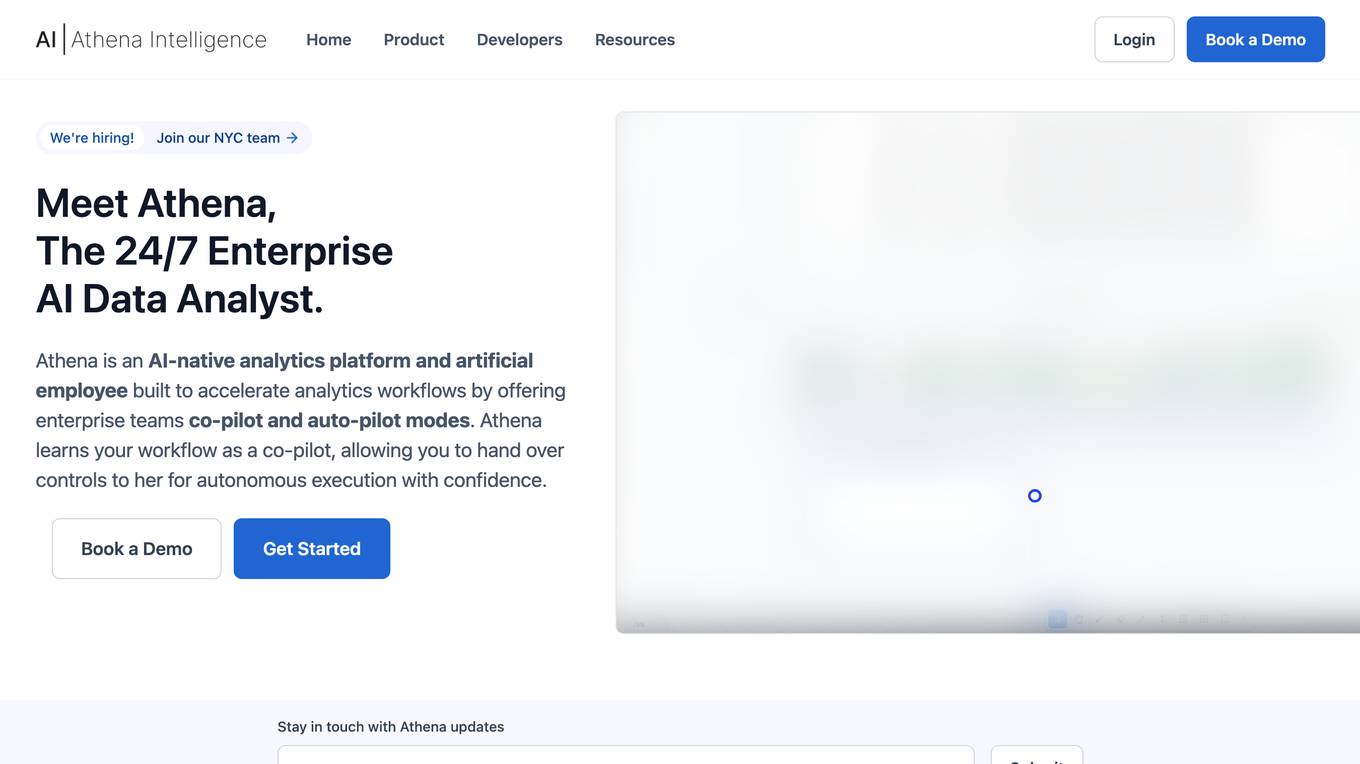
Athena Intelligence
Athena Intelligence is an AI-native analytics platform and artificial employee designed to accelerate analytics workflows by offering enterprise teams co-pilot and auto-pilot modes. Athena learns your workflow as a co-pilot, allowing you to hand over controls to her for autonomous execution with confidence. With Athena, everyone in your enterprise has access to a data analyst, and she doesn't take days off. Simple integration to your Enterprise Data Warehouse Chat with Athena to query data, generate visualizations, analyze enterprise data and codify workflows. Athena's AI learns from existing documentation, data and analyses, allowing teams to focus on creating new insights. Athena as a platform can be used collaboratively with co-workers or Athena, with over 100 users in the same report or whiteboard environment concurrently making edits. From simple queries and visualizations to complex industry specific workflows, Athena enables you with SQL and Python-based execution environments.
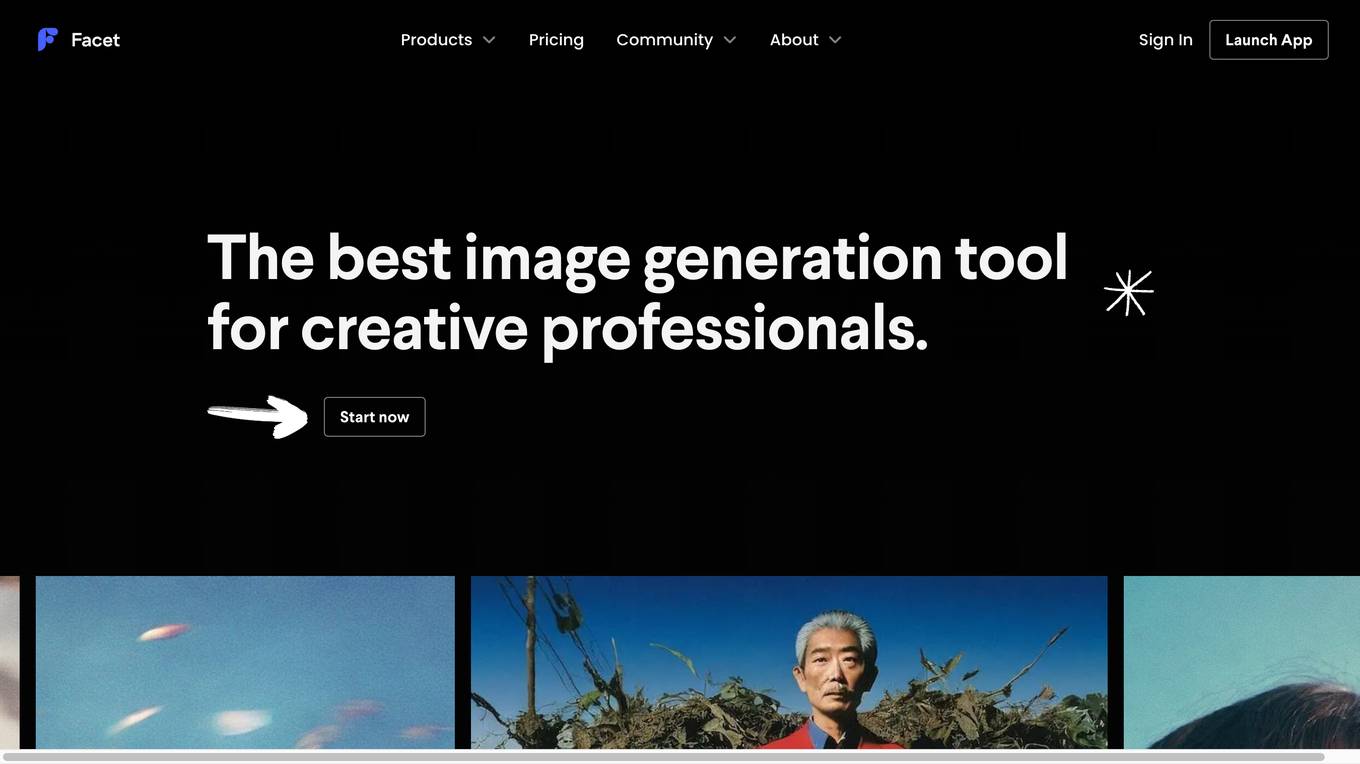
Facet
Facet is a cutting-edge generative imagery tool that helps creative professionals focus on what matters. It provides creative assistance without trading off artistic control. Facet helps overcome time and resource constraints that prevent trying out ideas. It offers an intuitive image generation experience with more than just text prompts, including image references, automatic prompt variations, and even custom models trained on the user's exact aesthetic. Facet allows users to train a custom model using their own images in minutes, generating endless assets in their exact vision. Users can add image references to any prompt, instantly getting images that adhere to their subject or style. Facet provides a collaborative canvas for users to riff with teammates and build off of each other's prompts and ideas.
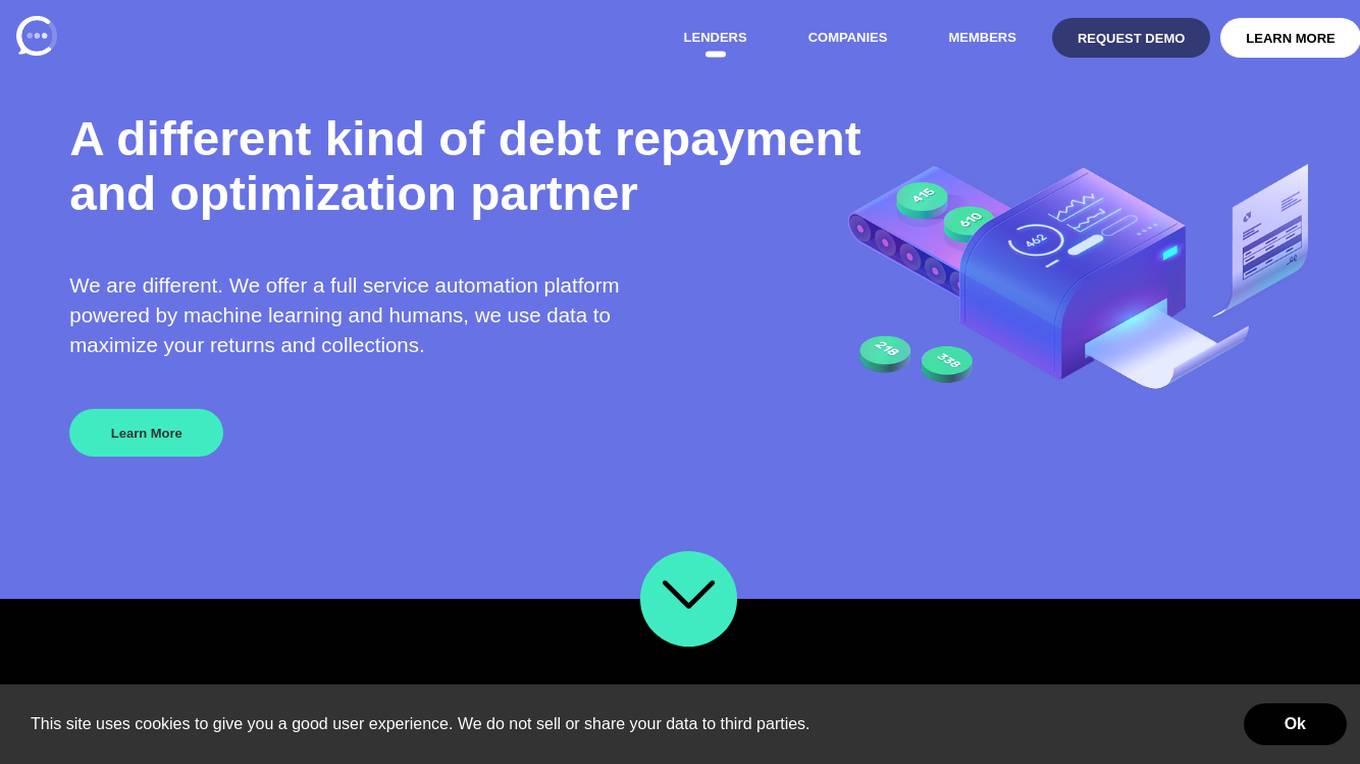
Clerkie
Clerkie is a powerful debt repayment and optimization platform that offers a full-service automation solution powered by machine learning and human expertise. It helps lenders, both big and small, to manage and optimize their loan portfolios efficiently. With features like smart payment experience, AI-driven repayment strategies, real-time reporting, and easy integration, Clerkie ensures a seamless and secure experience for lenders and borrowers alike.
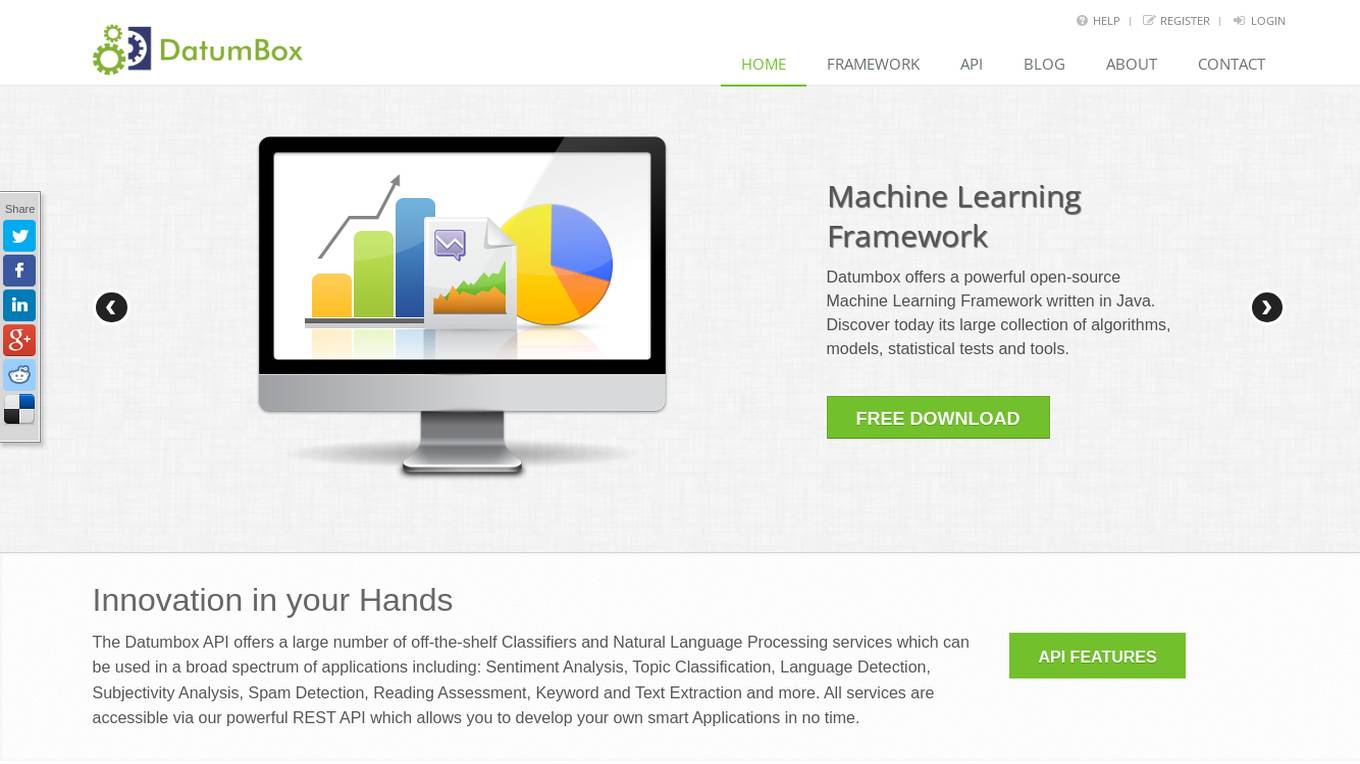
Datumbox
Datumbox is a machine learning platform that offers a powerful open-source Machine Learning Framework written in Java. It provides a large collection of algorithms, models, statistical tests, and tools to power up intelligent applications. The platform enables developers to build smart software and services quickly using its REST Machine Learning API. Datumbox API offers off-the-shelf Classifiers and Natural Language Processing services for applications like Sentiment Analysis, Topic Classification, Language Detection, and more. It simplifies the process of designing and training Machine Learning models, making it easy for developers to create innovative applications.
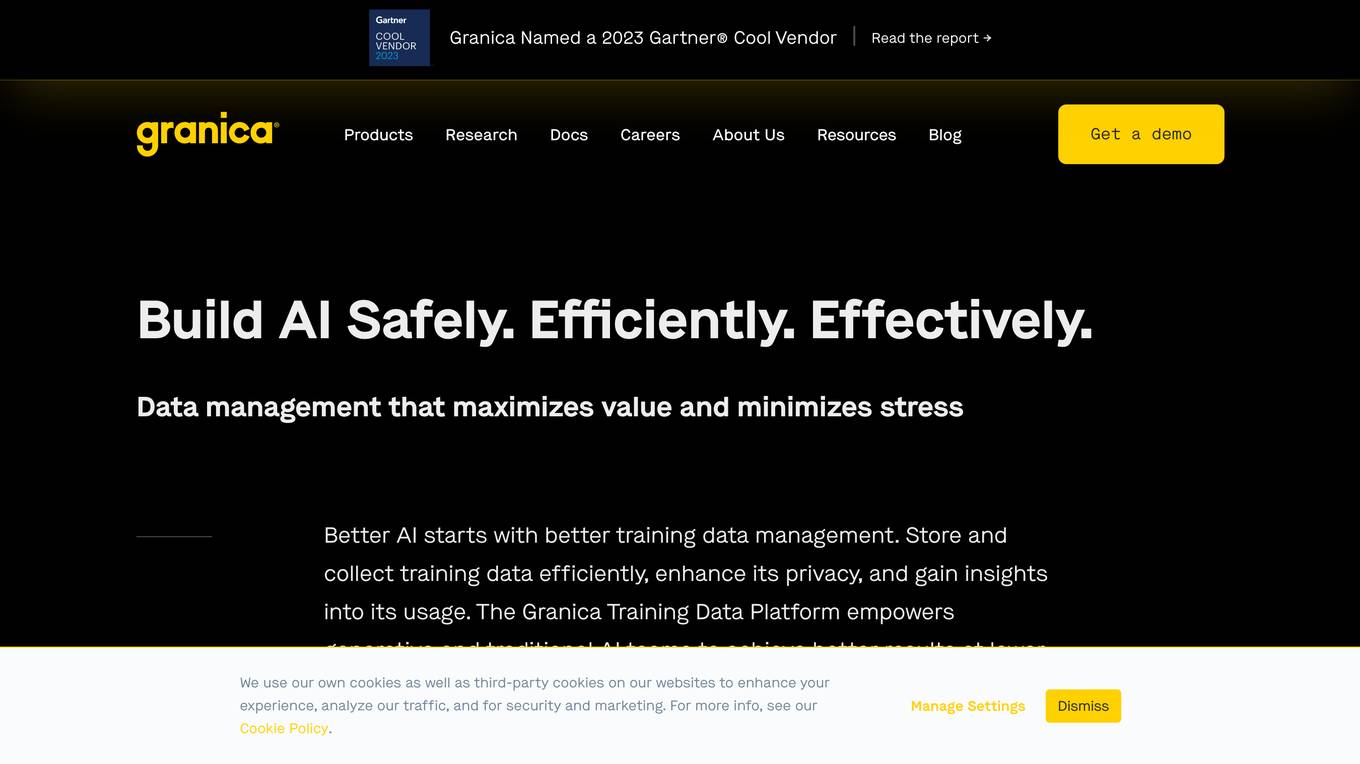
Granica
Granica is an AI tool designed for data compression and optimization, enabling users to transform petabytes of data into terabytes through self-optimizing, lossless compression. It works seamlessly across various data platforms like Iceberg, Delta, Trino, Spark, Snowflake, BigQuery, and Databricks, offering significant cost savings and improved query performance. Granica is trusted by data and AI leaders globally for its ability to reduce data bloat, speed up queries, and enhance data lake optimization. The tool is built for structured AI, providing transparent deployment, continuous adaptation, hands-off orchestration, and trusted controls for data security and compliance.
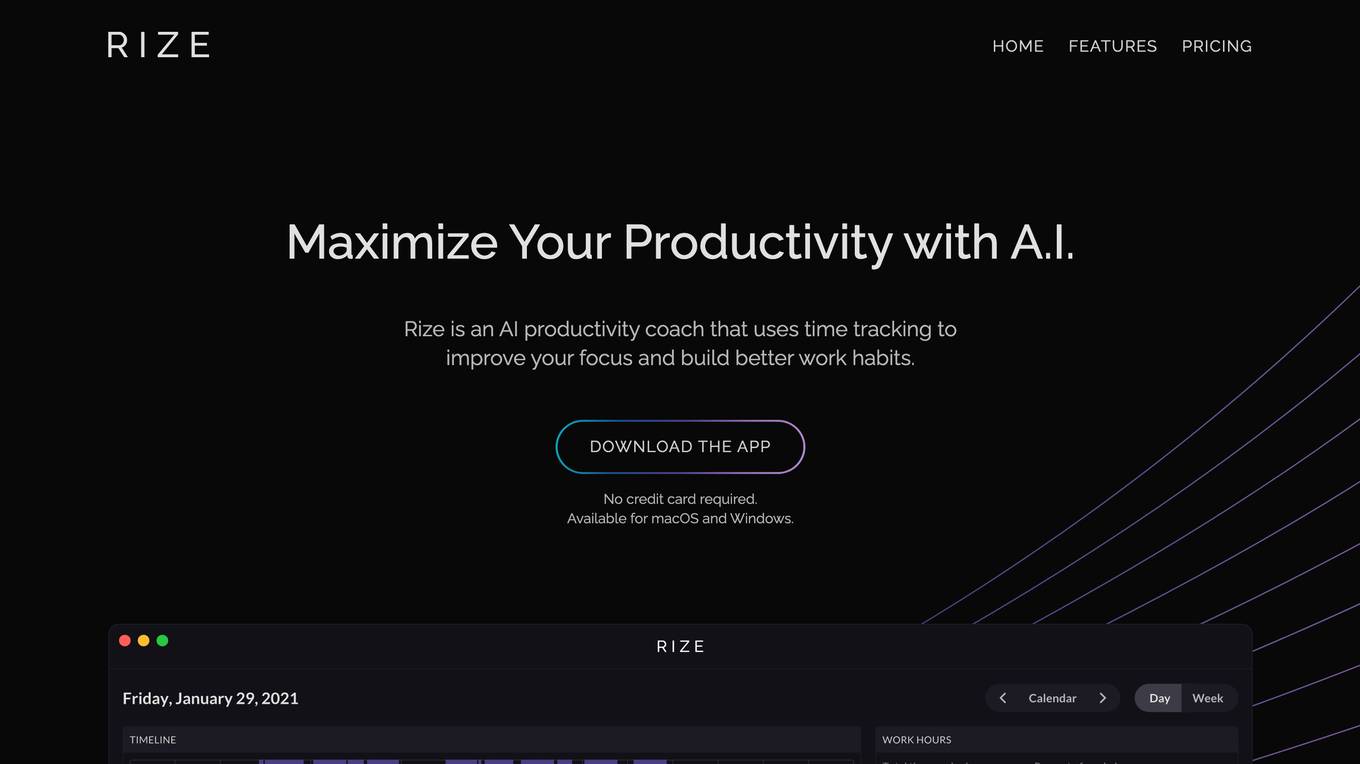
Rize
Rize is an AI productivity coach that uses time tracking to improve your focus and build better work habits. It analyzes your activity to advise you in real-time on when to focus, when to take breaks, and when you're getting off track. Rize provides you with the tools to deepen your ability to focus, including app & website blocking, focus music, a more flexible Pomodoro timer, and in-depth, personalized metrics. It also helps you build better work habits by alerting you at the ideal time to take a break and offering screen-blocking features to ensure these breaks are truly effective.

prOFphet
prOFphet is an AI chatbot designed specifically for OnlyFans creators. It helps creators automate their messaging, build relationships with fans, and increase their earnings. prOFphet uses natural language processing to generate messages that sound like they come from the creator, so fans feel like they are having a real conversation. The chatbot also remembers conversations, so creators can pick up where they left off without missing a beat. prOFphet is easy to use and integrates seamlessly with OnlyFans. Creators can simply connect their OnlyFans account to prOFphet and start using the chatbot right away.
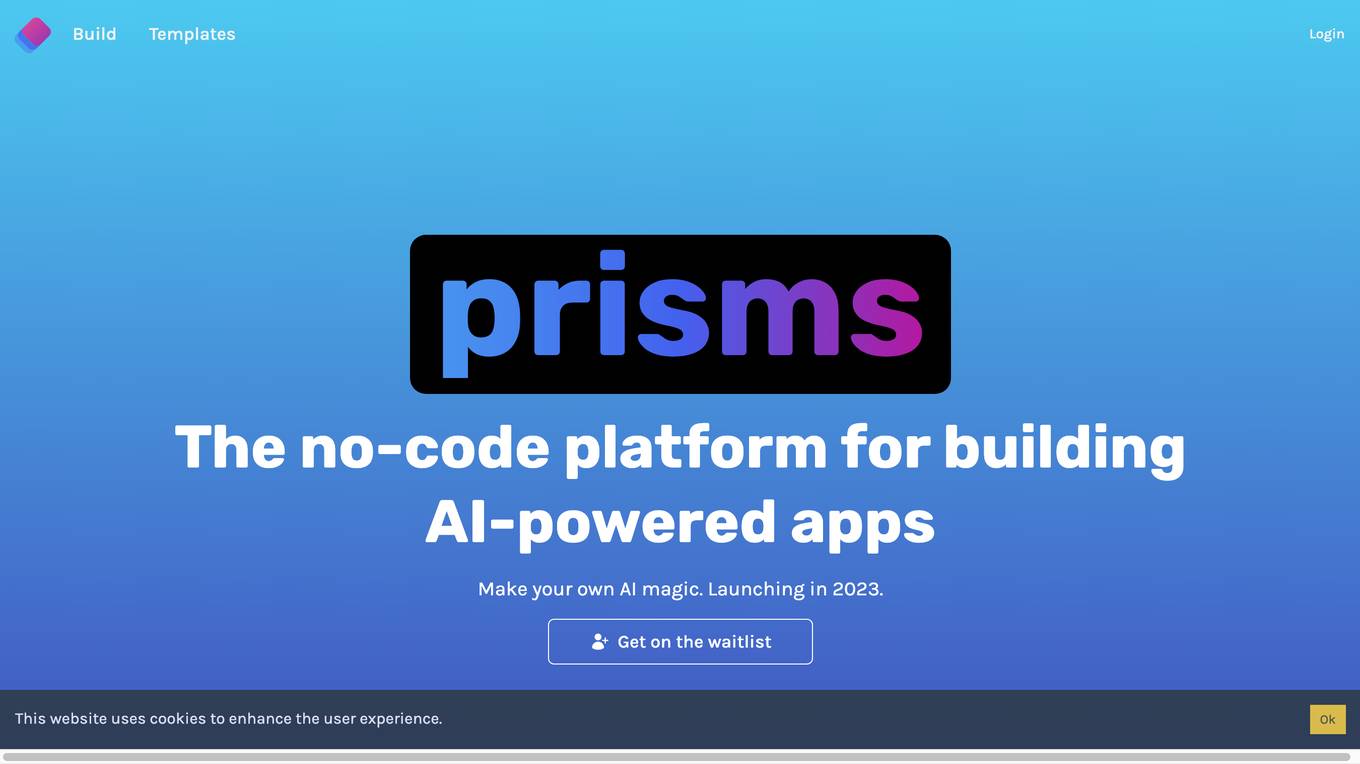
Prisms
Prisms is a no-code platform for building AI-powered apps. It allows users to harness the power of AI without having to write any code. Prisms is built on top of Large Language models including GPT3, DALL-E, and Stable Diffusion. Users can connect the pieces in Prisms to stack together data sources, user inputs, and off-the-shelf building blocks to create their own AI-powered apps. Prisms also makes it easy to deploy AI-powered apps directly from the platform with its pre-built UI. Alternatively, users can build their own frontend and use Prisms as a backend for their AI logic.
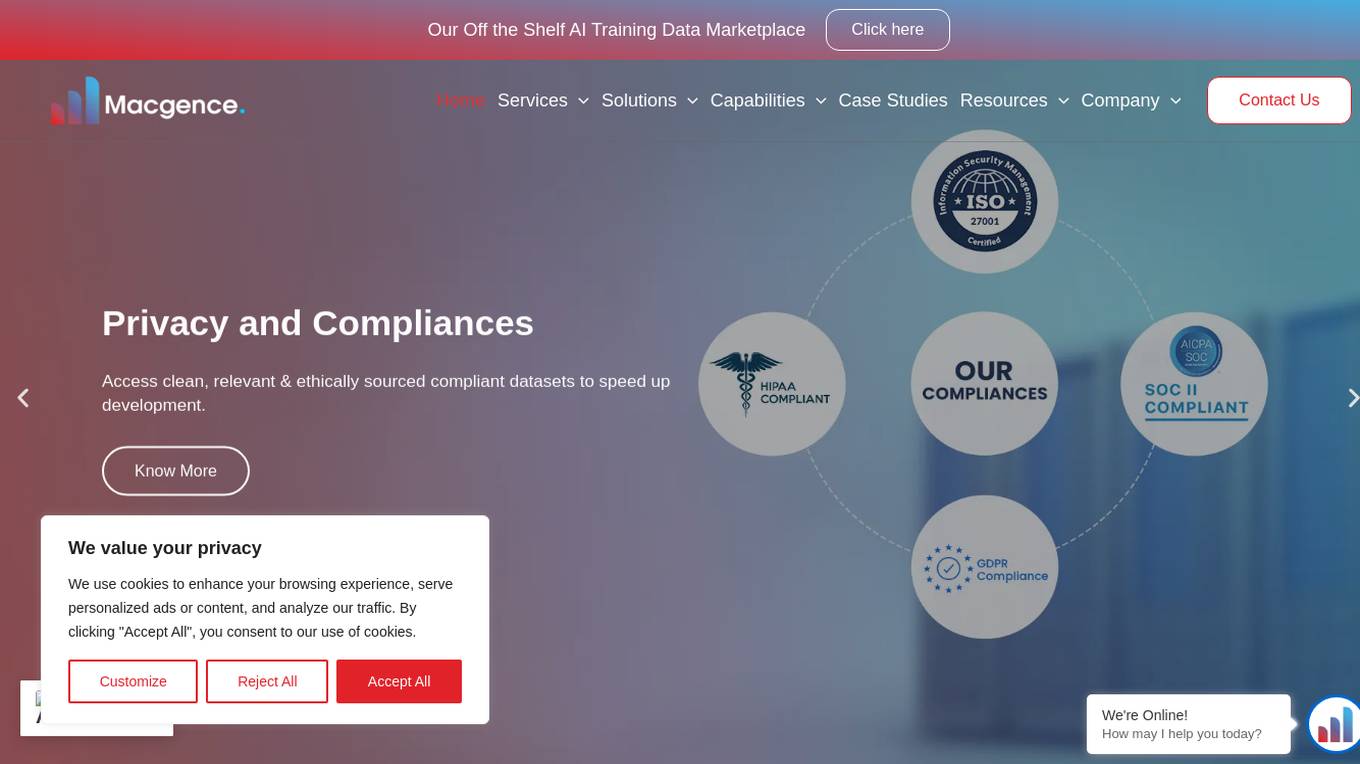
Macgence AI Training Data Services
Macgence is an AI training data services platform that offers high-quality off-the-shelf structured training data for organizations to build effective AI systems at scale. They provide services such as custom data sourcing, data annotation, data validation, content moderation, and localization. Macgence combines global linguistic, cultural, and technological expertise to create high-quality datasets for AI models, enabling faster time-to-market across the entire model value chain. With more than 5 years of experience, they support and scale AI initiatives of leading global innovators by designing custom data collection programs. Macgence specializes in handling AI training data for text, speech, image, and video data, offering cognitive annotation services to unlock the potential of unstructured textual data.
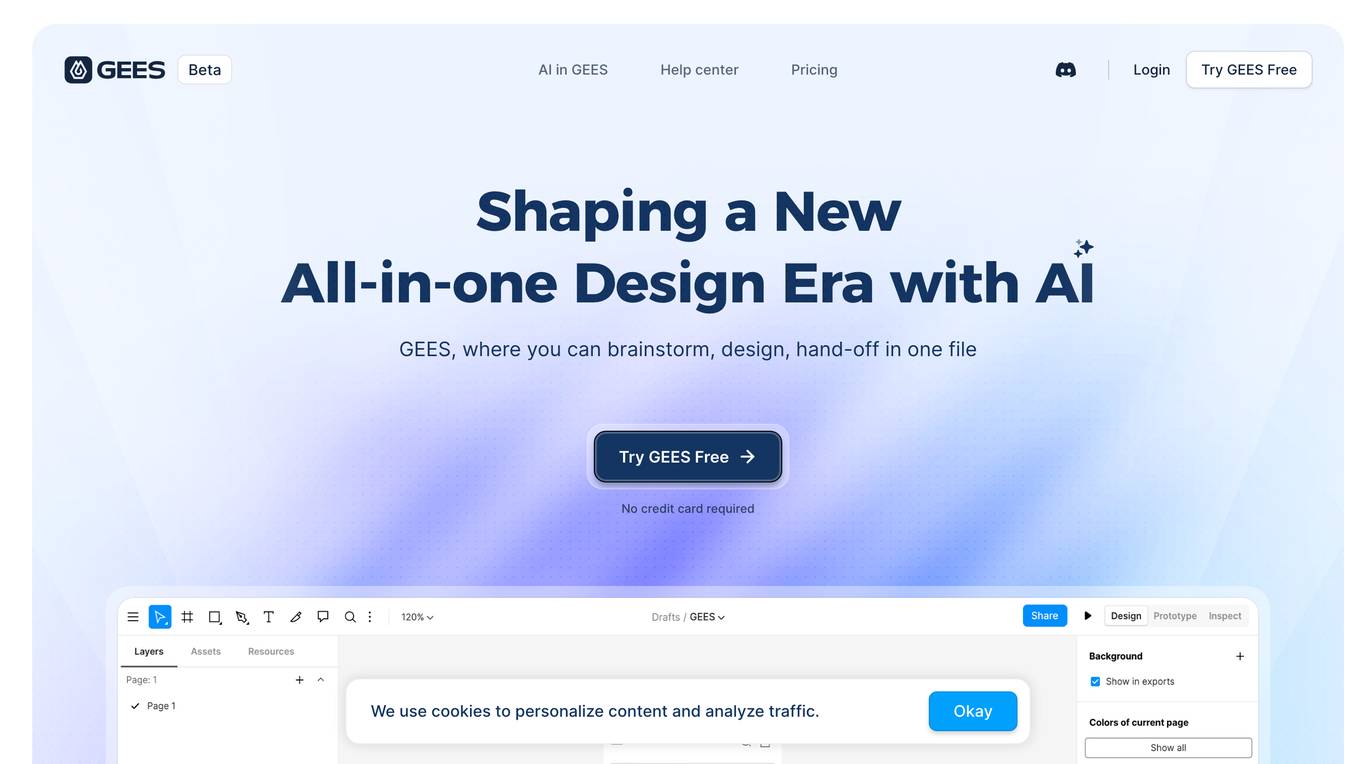
GEES
GEES is an all-in-one AI design platform that revolutionizes the design process by offering a comprehensive suite of tools for brainstorming, designing, and hand-off in one file. With GEES AI Assistant, users can generate components and drafts effortlessly, handle diverse design tasks, and elevate workflow efficiency. The platform allows for customized workflows by integrating AI blocks, enabling users to build innovative workflows step by step. GEES supports various design file formats, ensures data security with robust features, and offers a seamless experience from planning to handoff.
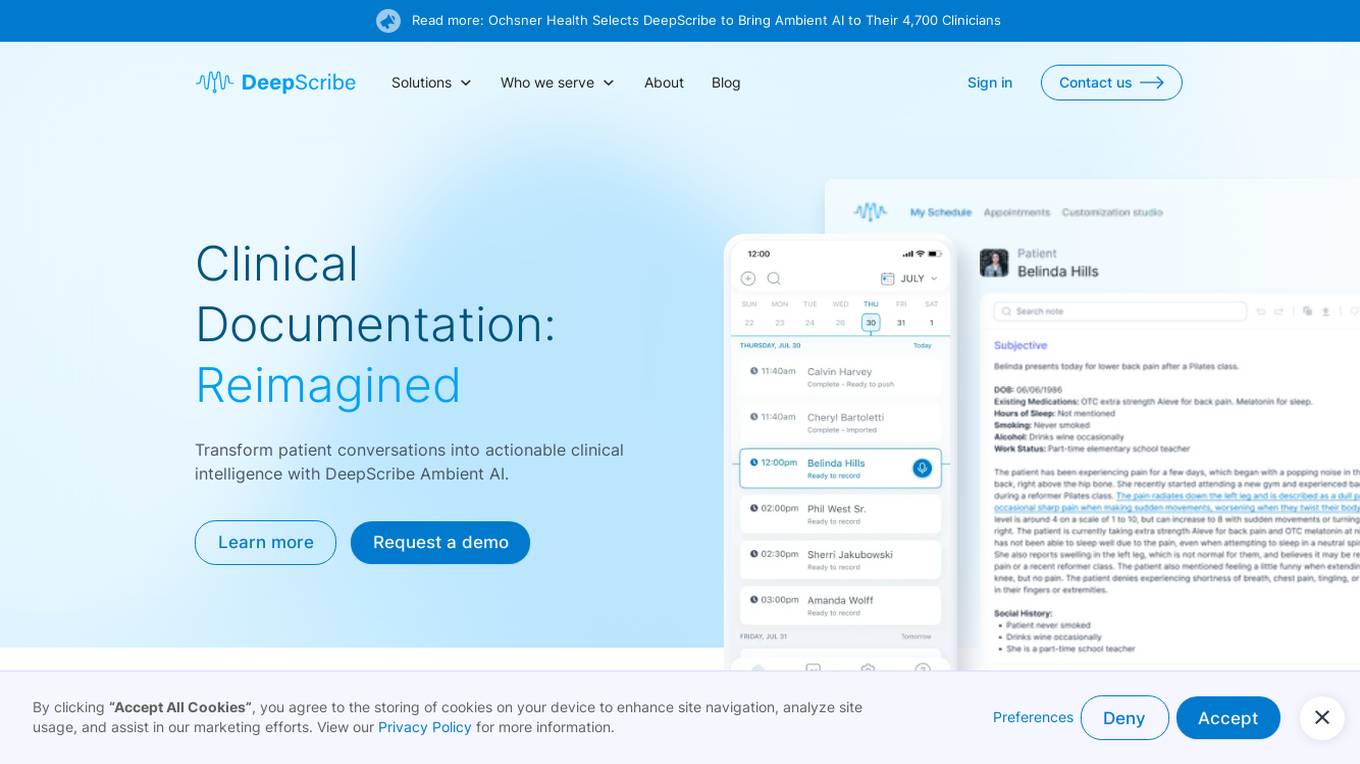
DeepScribe
DeepScribe is an AI medical scribe application that leverages advanced speech recognition technology to capture clinical conversations with extreme accuracy. It empowers clinicians and health systems with real-time AI insights, offers customization options to match provider workflows, and ensures trust and safety through features that promote AI transparency. DeepScribe is designed to save time, improve accuracy, drive adoption, and maximize revenue for doctors, hospitals, and health systems. The application is built for enterprise use, allowing users to unlock the power of AI and modernize their patient data strategy.
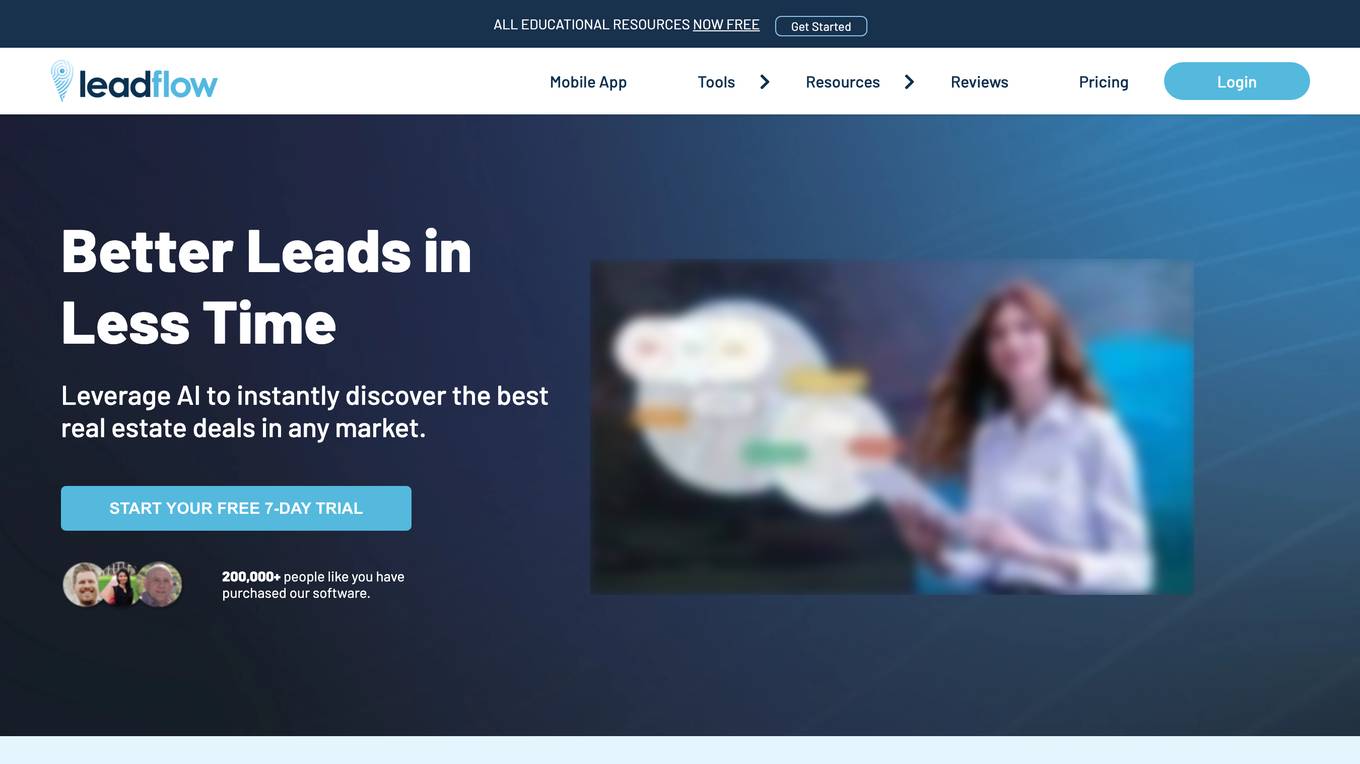
Scope Ai Platform
The website is an AI tool called Scope Ai Platform that provides property, owner, investor, and lender intelligence. It offers nationwide coverage, predictive scoring, and tailored insights to help users find opportunities, connect with the right people, and make faster decisions in various markets. The platform combines massive data coverage with advanced predictive modeling to deliver actionable intelligence for business growth. It caters to industries such as insurance, retail, investment, luxury goods, and more, offering solutions for unique data challenges. The platform is compliance-ready, built on public and licensed non-credit data without credit bureau information or live tracking.
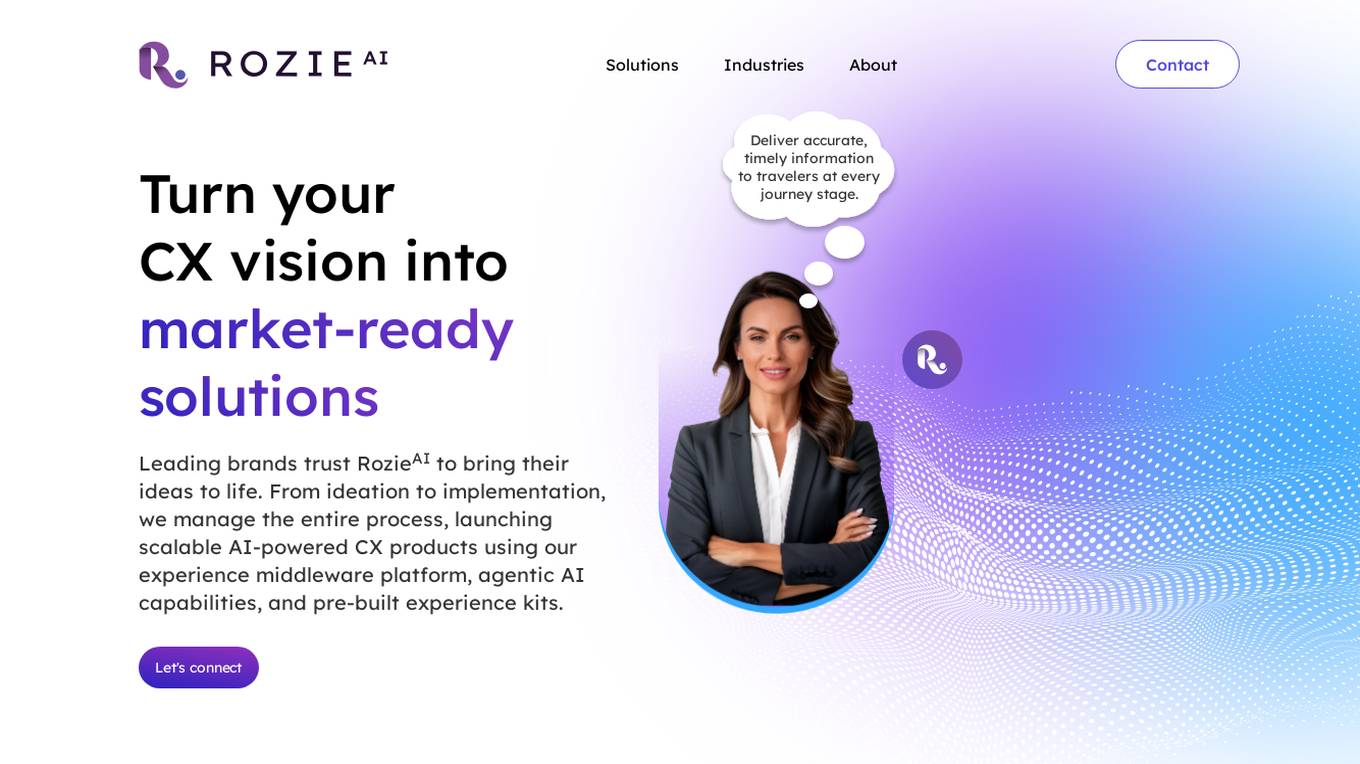
Rozie AI
Rozie AI is an AI partner that helps create personalized experiences at scale for leading brands. The platform offers a middleware solution, agentic AI capabilities, and pre-built experience kits to manage the entire process from ideation to implementation. Rozie AI specializes in experience design, digital engagement, and applying artificial intelligence to future-proof product experiences. The company empowers clients to own their experiences while off-loading the tech stack maintenance. With customizable solutions, Rozie AI delivers speed, scalability, and control for innovative CX solutions.
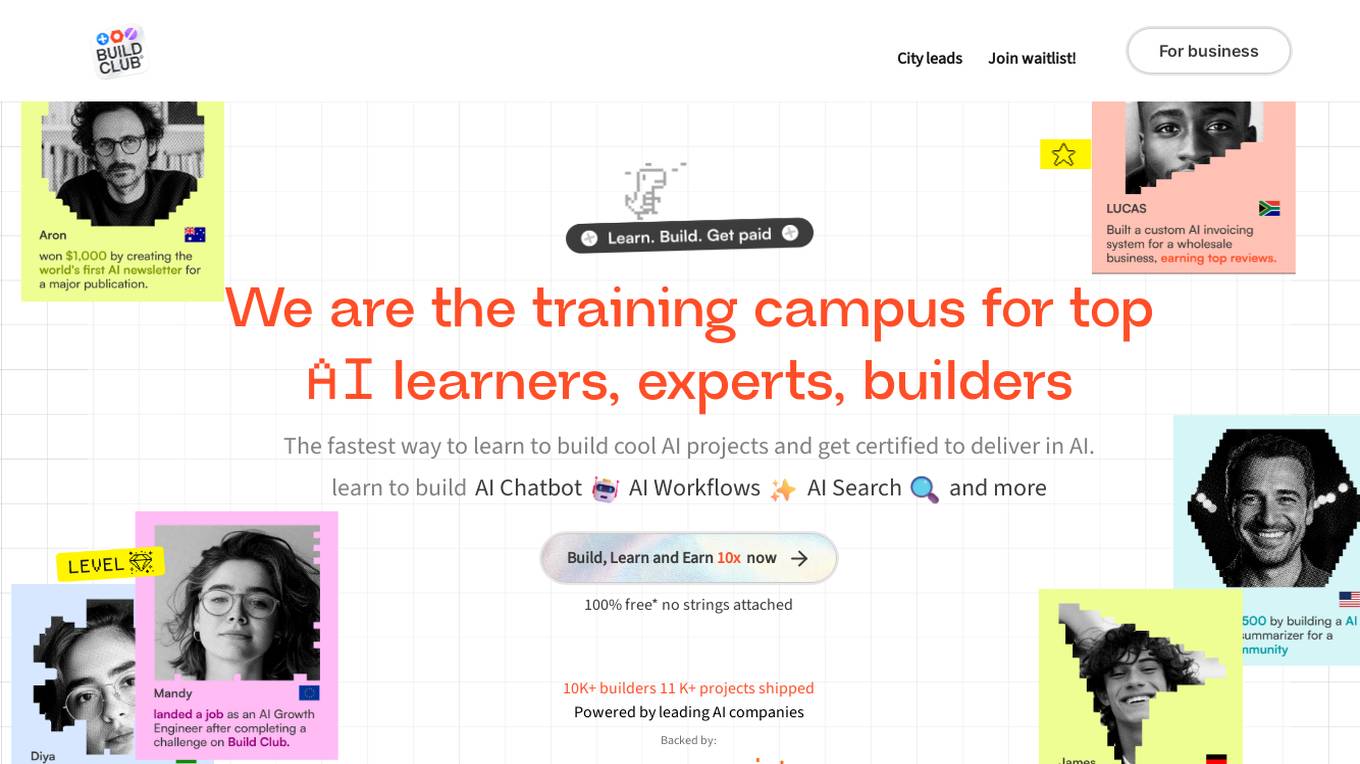
Build Club
Build Club is a leading training campus for AI learners, experts, and builders. It offers a platform where individuals can upskill into AI careers, get certified by top AI companies, learn the latest AI tools, and earn money by solving real problems. The community at Build Club consists of AI learners, engineers, consultants, and founders who collaborate on cutting-edge AI projects. The platform provides challenges, support, and resources to help individuals build AI projects and advance their skills in the field.
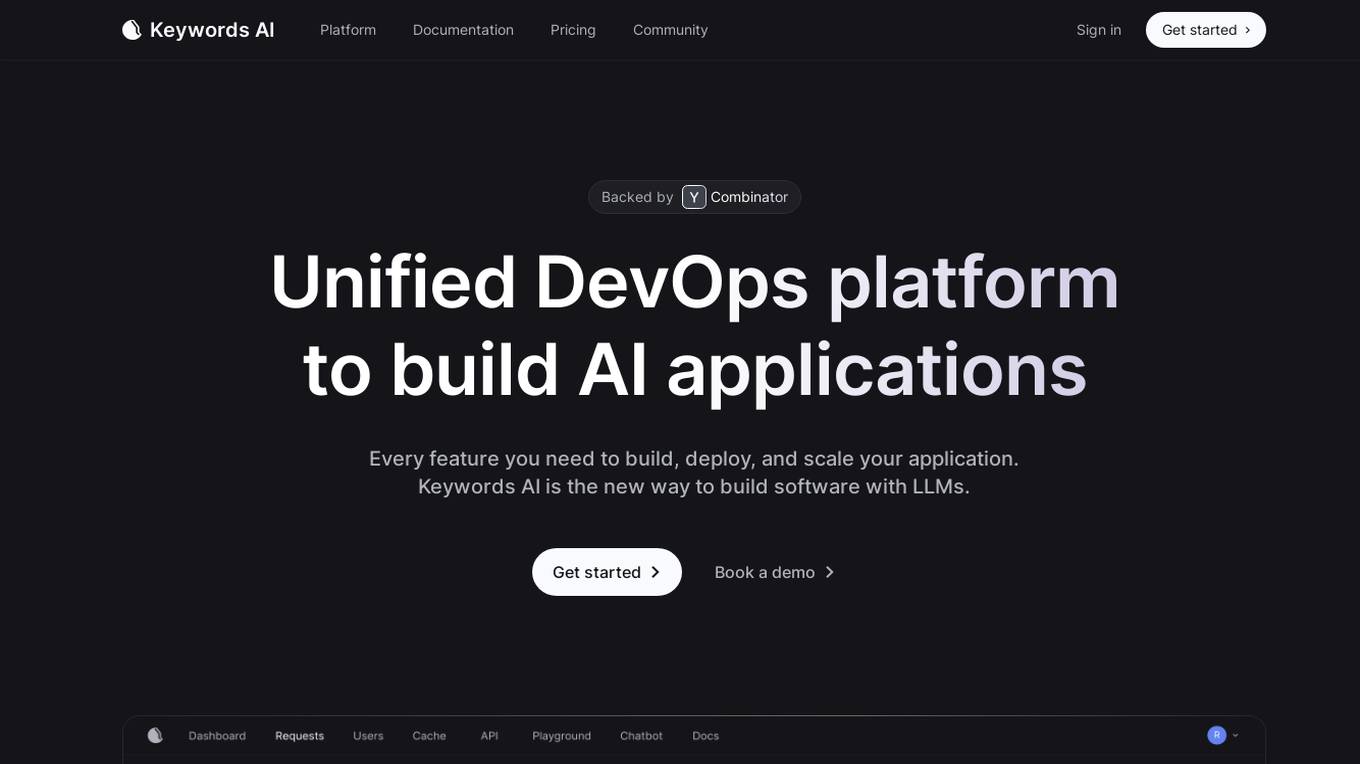
Unified DevOps platform to build AI applications
This is a unified DevOps platform to build AI applications. It provides a comprehensive set of tools and services to help developers build, deploy, and manage AI applications. The platform includes a variety of features such as a code editor, a debugger, a profiler, and a deployment manager. It also provides access to a variety of AI services, such as natural language processing, machine learning, and computer vision.
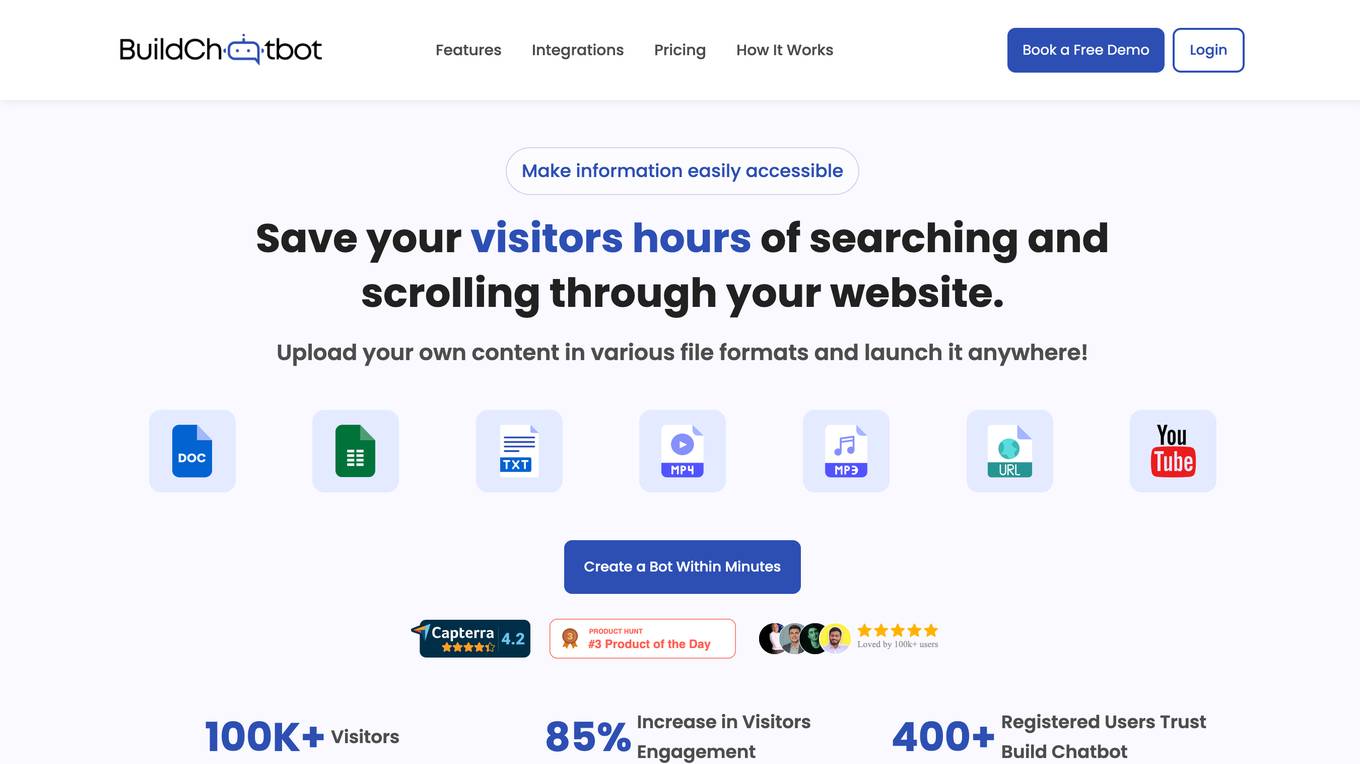
Build Chatbot
Build Chatbot is a no-code chatbot builder designed to simplify the process of creating chatbots. It enables users to build their chatbot without any coding knowledge, auto-train it with personalized content, and get the chatbot ready with an engaging UI. The platform offers various features to enhance user engagement, provide personalized responses, and streamline communication with website visitors. Build Chatbot aims to save time for both businesses and customers by making information easily accessible and transforming visitors into satisfied customers.
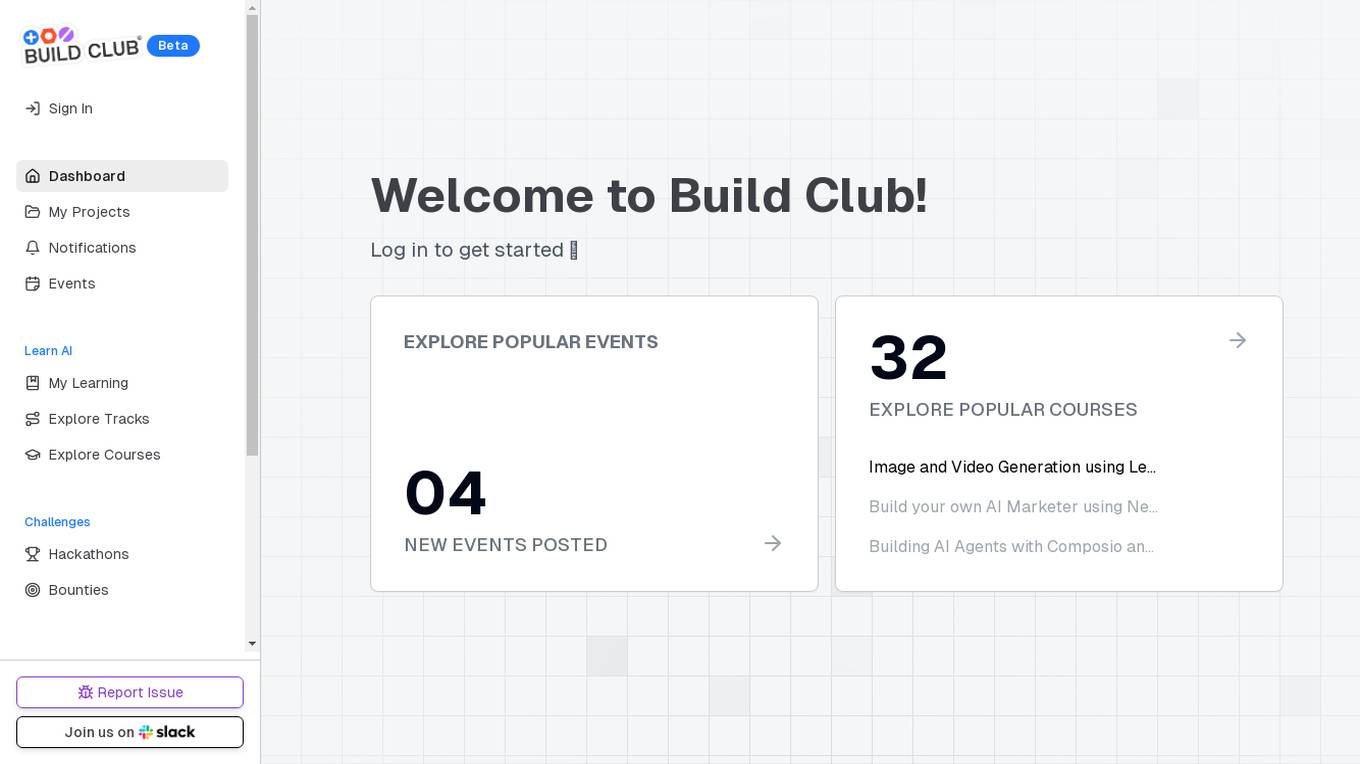
Build Club
Build Club is an AI tool designed to help individuals learn and explore various aspects of artificial intelligence. The platform offers a wide range of courses, challenges, hackathons, and community projects to enhance users' AI skills. Users can build AI models for tasks like image and video generation, AI marketing, and creating AI agents. Build Club aims to create a collaborative learning environment for AI enthusiasts to grow their knowledge and skills in the field of artificial intelligence.
1 - Open Source AI Tools
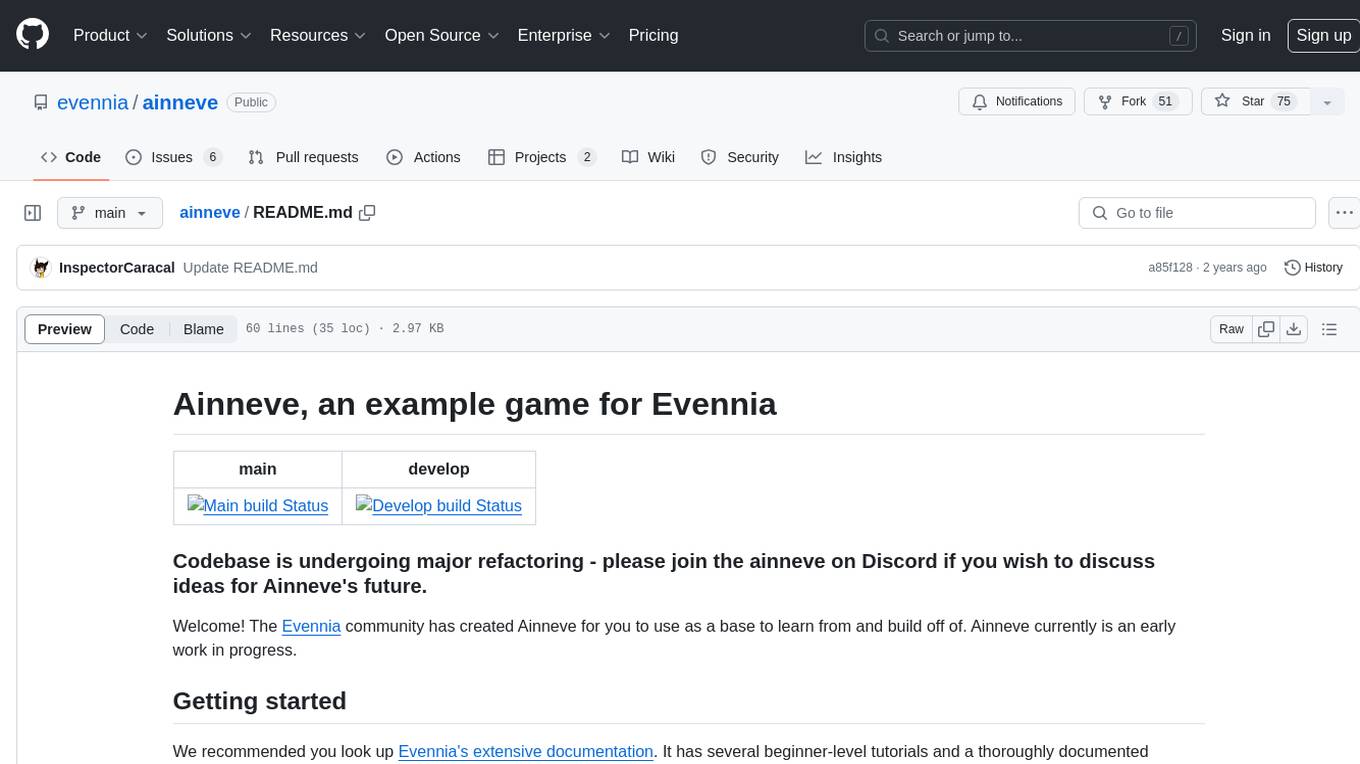
ainneve
Ainneve is an example game for Evennia, created by the Evennia community as a base for learning and building off of. It is currently in early development stages and undergoing major refactoring. The game provides a starting point for users to explore game systems and world settings, with extensive documentation available. Installation is straightforward, with pre-configured settings and clear instructions for setting up and starting the server. The project welcomes contributions and offers opportunities for users to get involved by checking open issues and joining the community Discord channel. Ainneve is licensed under the BSD license.
20 - OpenAI Gpts
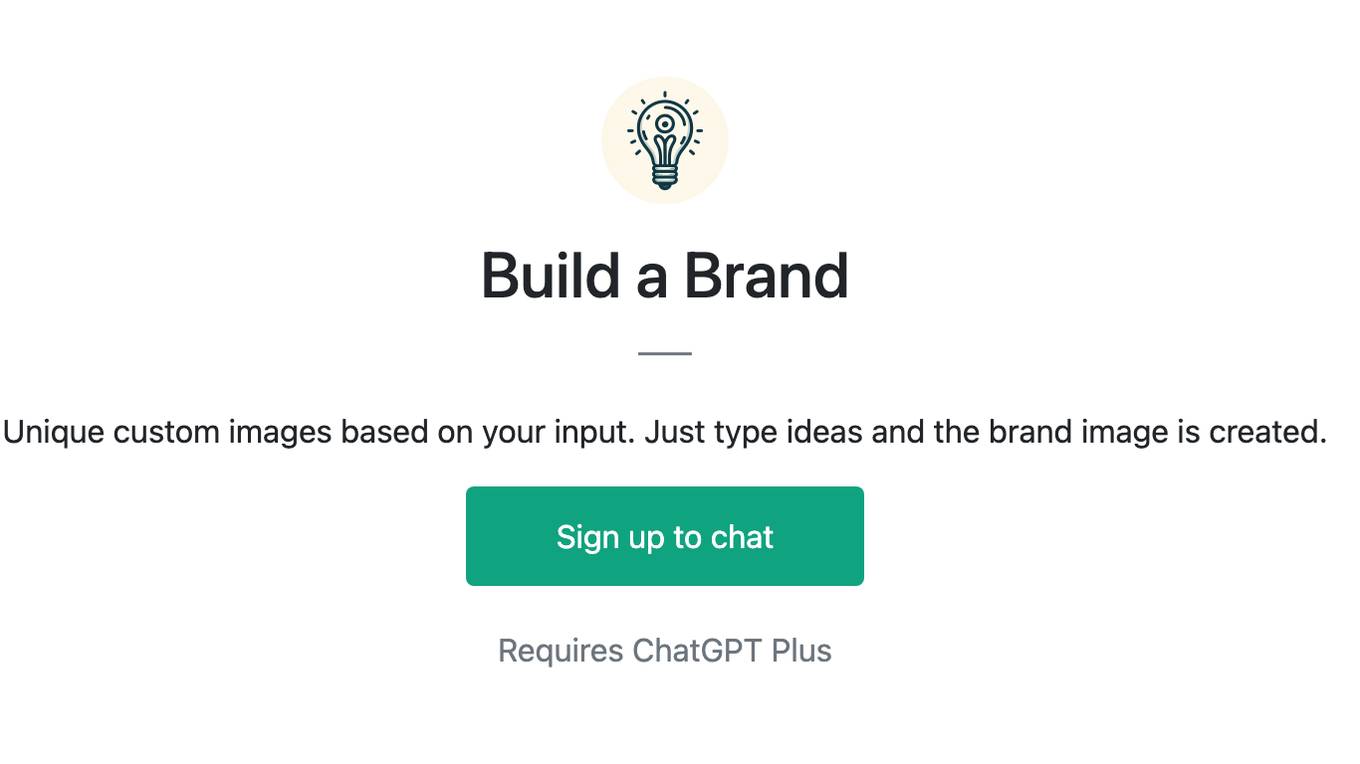
Build a Brand
Unique custom images based on your input. Just type ideas and the brand image is created.
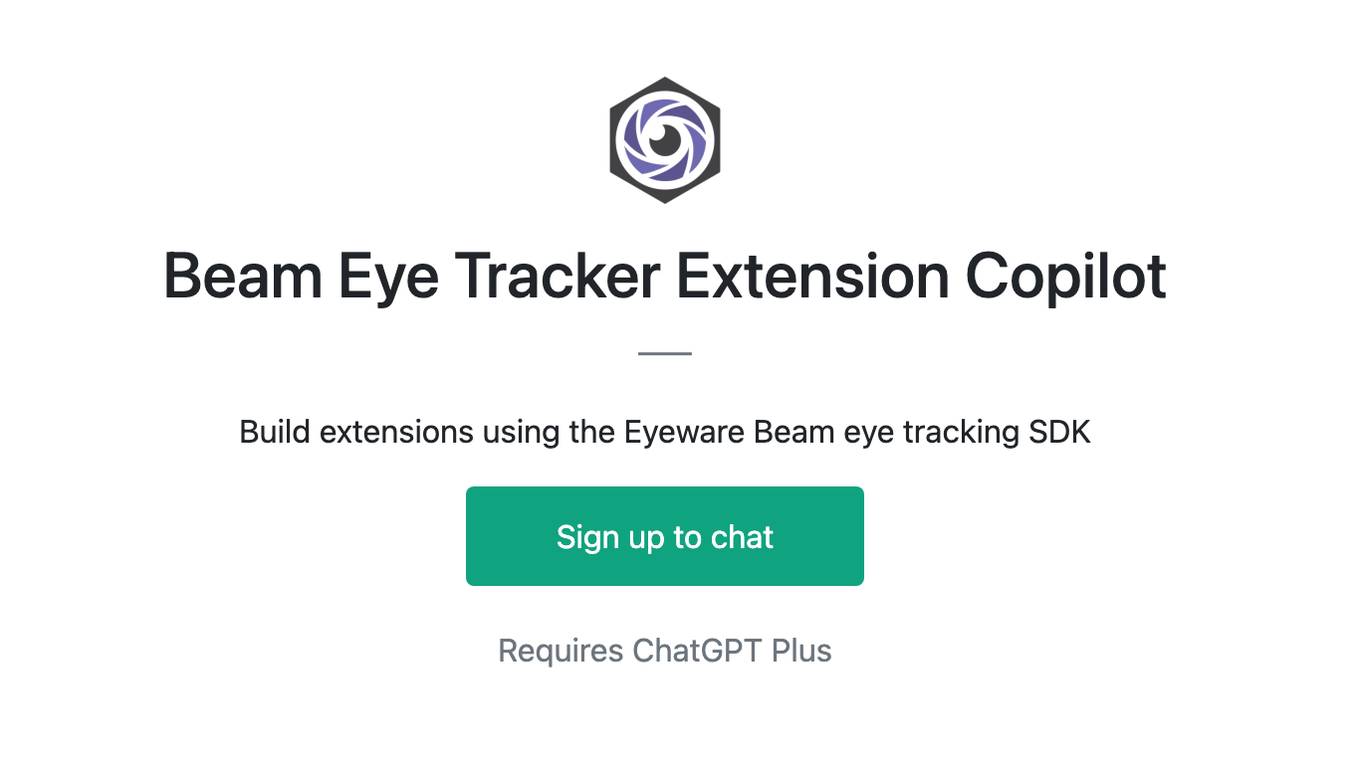
Beam Eye Tracker Extension Copilot
Build extensions using the Eyeware Beam eye tracking SDK
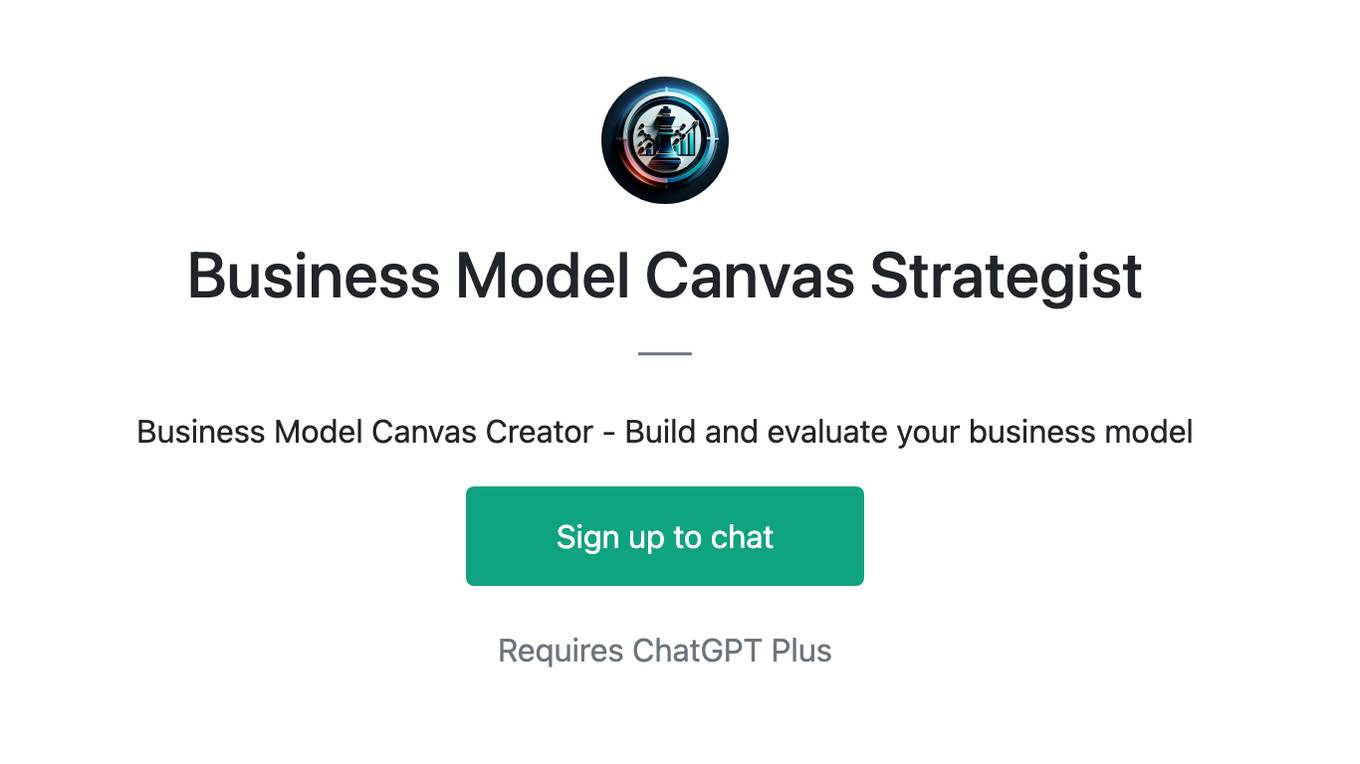
Business Model Canvas Strategist
Business Model Canvas Creator - Build and evaluate your business model

League Champion Builder GPT
Build your own League of Legends Style Champion with Abilities, Back Story and Splash Art
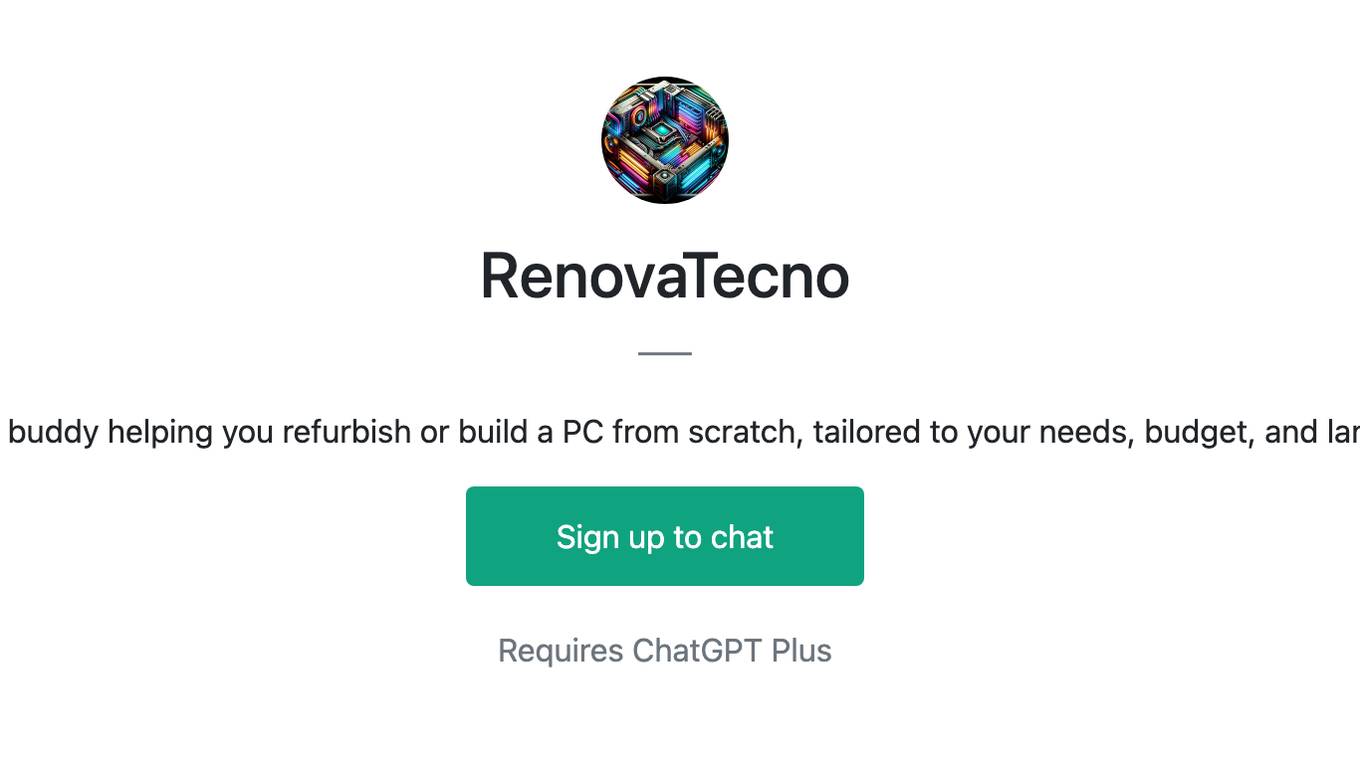
RenovaTecno
Your tech buddy helping you refurbish or build a PC from scratch, tailored to your needs, budget, and language.
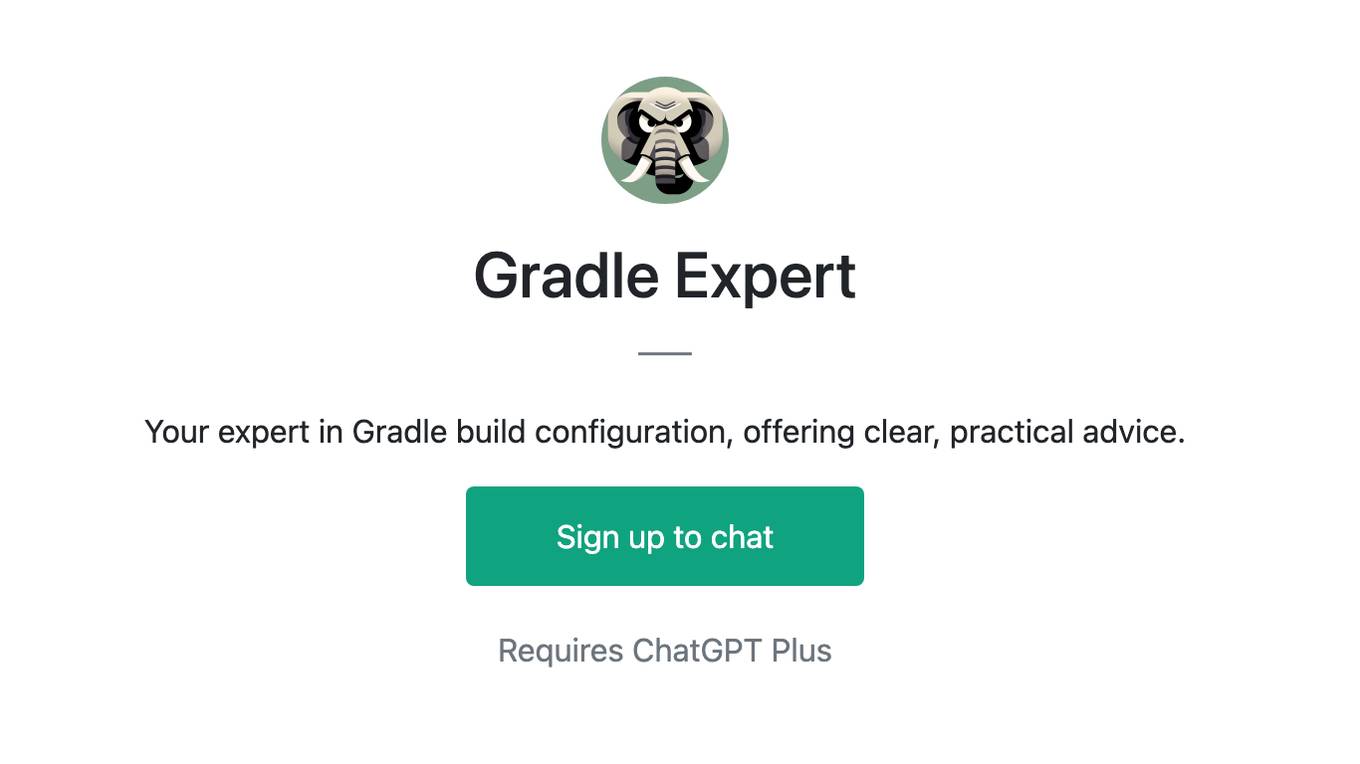
Gradle Expert
Your expert in Gradle build configuration, offering clear, practical advice.
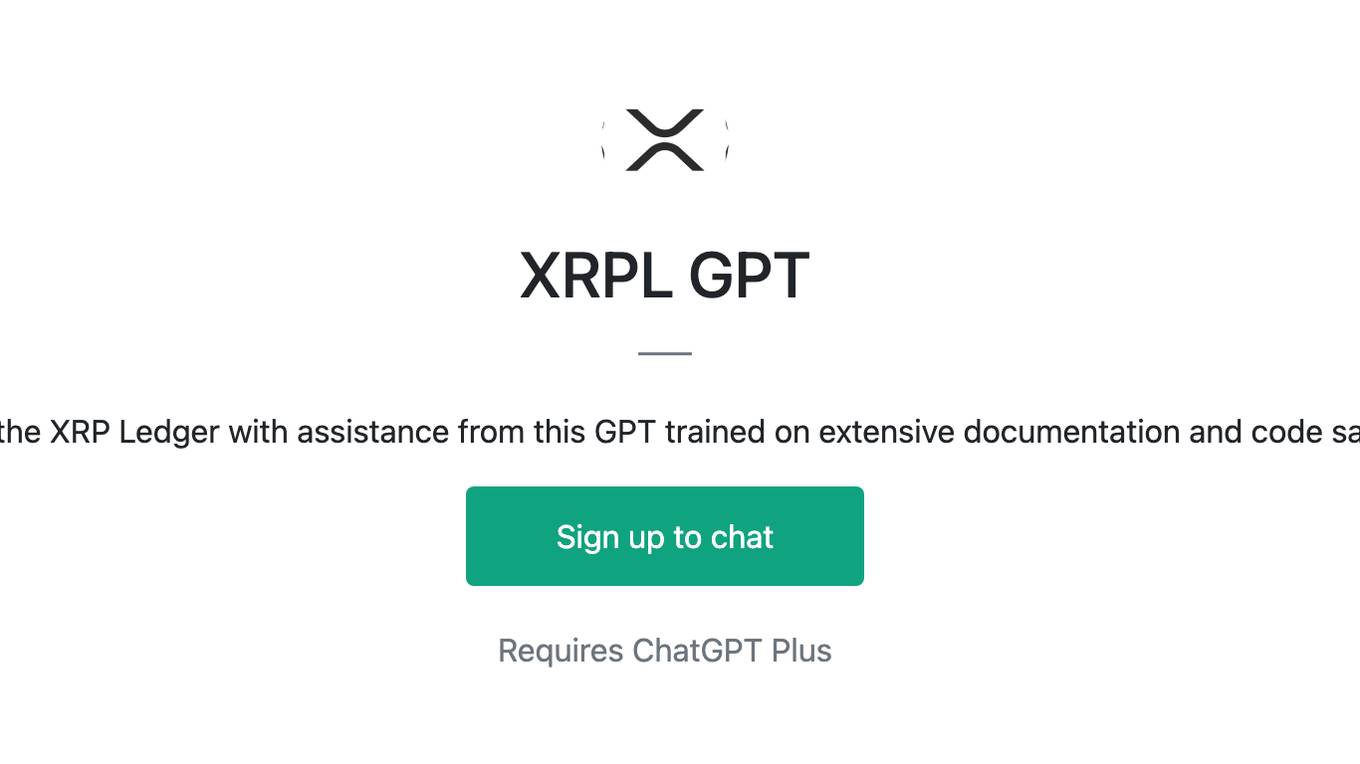
XRPL GPT
Build on the XRP Ledger with assistance from this GPT trained on extensive documentation and code samples.
